Philips OLED820 is a very successful and significant step forward compared to last year's model, the OLED 819. For many people, the main reason for purchase will, of course, be Ambilight: the multi-coloured lighting system that distinguishes Philips televisions from the competition. It's not hard to see why, as it made a huge impression on us as well. It's not just an impressive gadget, but a real addition that can transform the experience of the content being viewed and add depth to it. However, Ambilight should not overshadow what the OLED820 offers as a screen. We have almost infinite contrast, high brightness in HDR films, and excellent colour reproduction, which improves even further after slight tweaking or professional calibration. This set guarantees one of the best images that can currently be found on the market, and on top of that, we are aware that the television offers something unique and unattainable anywhere else. It is also a device that performs well in gaming. The 144 Hz panel and HDMI 2.1 ports open up access to the full potential of next-generation consoles, and the low input lag ensures that gameplay is exceptionally responsive. The operating system – Google TV – also deserves praise. It is a much better solution than the proprietary Titan OS found in lower models of Philips, such as the OLED770. This is a serious argument for paying extra for this model. A larger library of applications, a more efficient voice assistant, and fewer system errors translate into a distinctly better daily experience. Of course, the Philips OLED 820 is not free from minor flaws – there are some shortcomings in the software, and certain functions could be better refined. Nevertheless, the overall presentation is very solid. Perhaps the OLED820 is not a revolutionary television, but it is a very successful and well-balanced proposition in Philips's offering. It combines excellent image quality, a full set of functions for gamers, and a unique addition in the form of Ambilight. If you are looking for a solid OLED in the mid-range that, aside from good image quality, offers something distinctive and simultaneously exceptional, the OLED820 should be high on your shopping list.
- Matching (Score)
- Our verdict
- TV appearance
- Where to buy
- Contrast and black detail
- HDR effect quality
- Factory color reproduction
- Color reproduction after calibration
- Smoothness of tonal transitions
- Image scaling and smoothness of tonal transitions
- Blur and motion smoothness
- Console compatibility and gaming features
- Input lag
- Compatibility with PC
- Viewing angles
- TV efficiency during daytime
- Details about the matrix
- TV features
- Apps
- Playing files from USB
- Sound
Philips OLED820 vs LG QNED93A / QNED90A
Direct compare
QNED93A / QNED90A

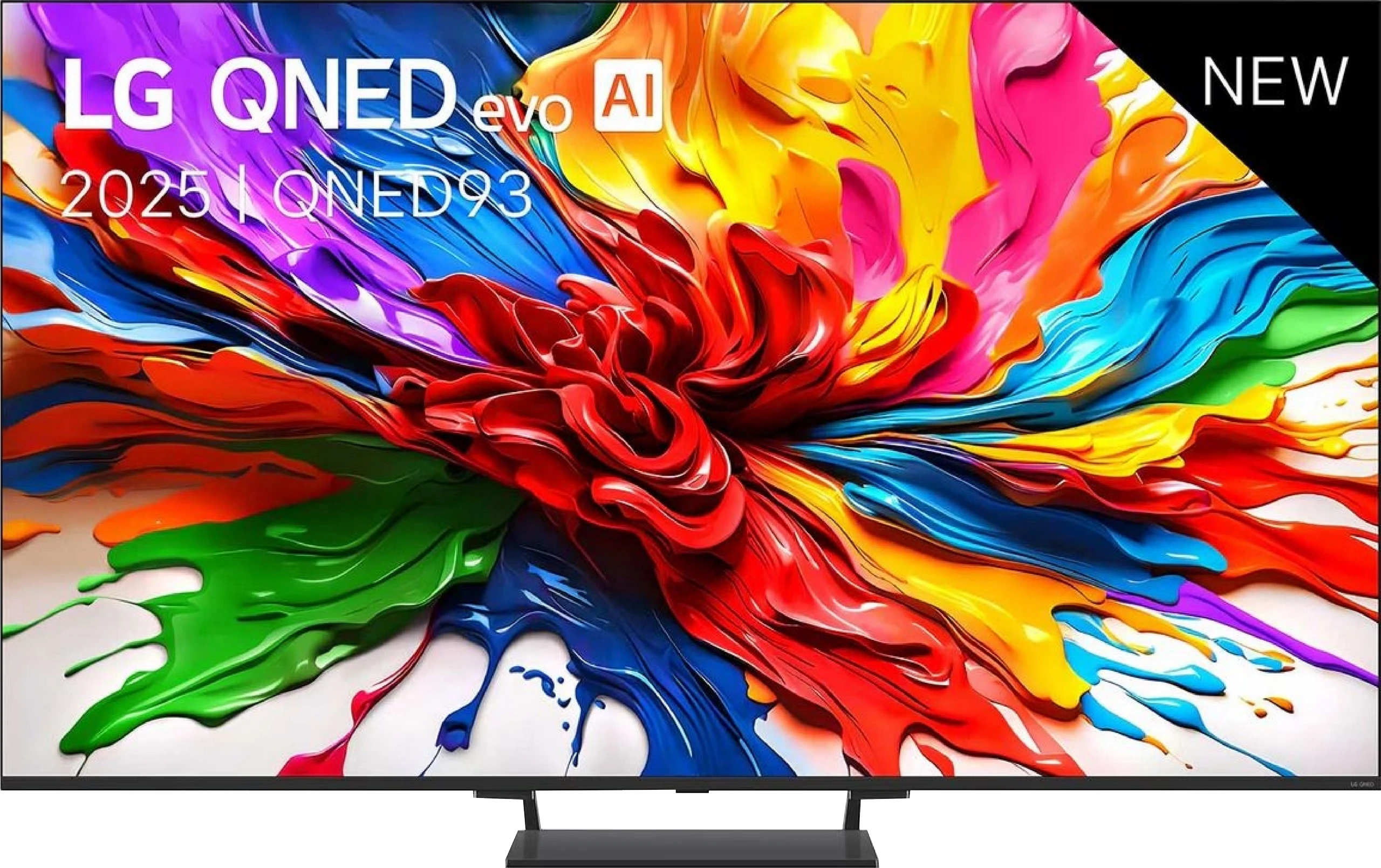
Panel type: WRGB OLED
Resolution: 3810x2160
System: Google TV
Model year: 2025
Complete the survey to find out the result

Panel type: LCD VA
Resolution: 3840x2160
System: WebOS
Model year: 2025
Complete the survey to find out the result

Overall rating
8.0
7.3
Movies and series in UHD quality
8.3
6.8
Classic TV, YouTube
8.6
6.9
Sports broadcasts (TV and apps)
8.5
6.9
Gaming on console
9.4
8.6
TV as a computer monitor
6.5
8.6
Watching in bright light
5.7
6.2
Utility functions
6.8
8.2
Apps
9.6
9.1
Sound quality
7.7
6.9
Complete the survey to find out what fits your preferences
Advantages
Ideal contrast and black thanks to the WOLED panel
High HDR brightness (up to 1300 nits) and wide coverage of the DCI-P3 colour palette (99%)
Support for multiple HDR formats including Dolby Vision and HDR10+
Great motion smoothness, no motion blur, refresh rate up to 144 Hz
Full support for gamers: HDMI 2.1 (2 ports), VRR, ALLM, HGiG, Dolby Vision in games, low input lag
Ambilight that has a real impact on the perception of the image and distinguishes the television from the competition
GoogleTV system with a vast application base and excellent voice assistant
Extras including: Backlit remote control and swivel stand
Support for Dolby Atmos and DTS:X audio formats
Quite good contrast
High number of dimming zones
Good HDR brightness (around 1400 nits)
Wide colour gamut coverage (around 96% DCI-P3)
144 Hz mode and full set of gaming features (HDMI 2.1, VRR, ALLM, G-Sync, FreeSync, HGiG, Game Bar)
Low input lag (7 ms at 120 Hz)
Good compatibility with PC, including 144 Hz and clear fonts,
WebOS with a rich assortment of apps and voice control
Magic Remote
Quite effective upscaling and image processing tools - it will work great for older content such as antenna TV or YouTube
Disadvantages
Only two HDMI 2.1 ports (with 2 consoles and a soundbar we are forced to "juggle" with the cables)
Lack of many classic "TV" functions, e.g. recording to USB or PiP mode, infrared remote may be irritating
Slight issues with colour blending (much better than last year but far from the competition)
Problems with font readability when working with PC (lack of full support for Chroma 4:4:4)
The local dimming algorithms require refinement
Very average viewing angles
Dolby Vision does not offer a significant improvement over HDR10
Our verdict
The LG QNED93A is a television that, at first glance, appears to be a solid step forward compared to previous LCD models from this brand. On paper, we get quite a lot: a significantly larger number of dimming zones, 144 Hz refresh rate for gamers, support for all HDR formats, including Dolby Vision, and WebOS with a new Magic remote, which remains one of the most convenient control systems. The QNED93A shines particularly in gaming applications. Four full-fledged HDMI 2.1 ports allow for connecting consoles and PCs without any restrictions, and the low input lag remains consistent at both 120 and 60 Hz. For PC users, an additional advantage is the 144 Hz mode and full compatibility with G-Sync and FreeSync. Therefore, it can be confidently said that in terms of gaming features, the QNED93A holds its own against the competition. Another strong point is WebOS. LG's system has long been regarded as one of the most user-friendly in everyday use, and this is confirmed here. Everything is clear, and the Magic remote allows for controlling the television like a mouse pointer – quickly and intuitively. Brightness can also be considered a plus. At its peak, it managed to achieve results close to 1400 nits. This is sufficient for the picture to remain vibrant in brighter rooms, and for special effects in films or games to look convincing. The image processor handles scaling of older content well – television or films in lower resolution appear clearer and sharper than on many competing screens.
However, it cannot be denied that the biggest problem with the QNED93A lies in the local dimming algorithms. In scenes full of black, the screen can dim significantly, causing many details to simply disappear. The effect is such that contrast appears better at first glance, but at the cost of information that should be visible. An additional problem is the Dolby Vision mode, which usually improves certain aspects of screens, yet in this case, it makes little difference. The differences between dynamic and static metadata literally have to be searched for with a magnifying glass. This is simply disappointing because the hardware itself, with its number of dimming zones and stronger backlighting, provides grounds for a better result. So, who is the LG QNED93A for? It is a television that works excellently as a home entertainment centre, especially if you're considering gaming on a console or PC. In everyday television viewing and films in well-lit conditions, it also delivers a lot of satisfaction due to its high brightness and decent image processor. However, one must accept that in scenes with a lot of black and full HDR utilisation, this model does not match its competitors. LG has shown that it can create a very solid LCD screen, but it is also evident that not everything has been refined as well as in their OLED televisions.
TV appearance




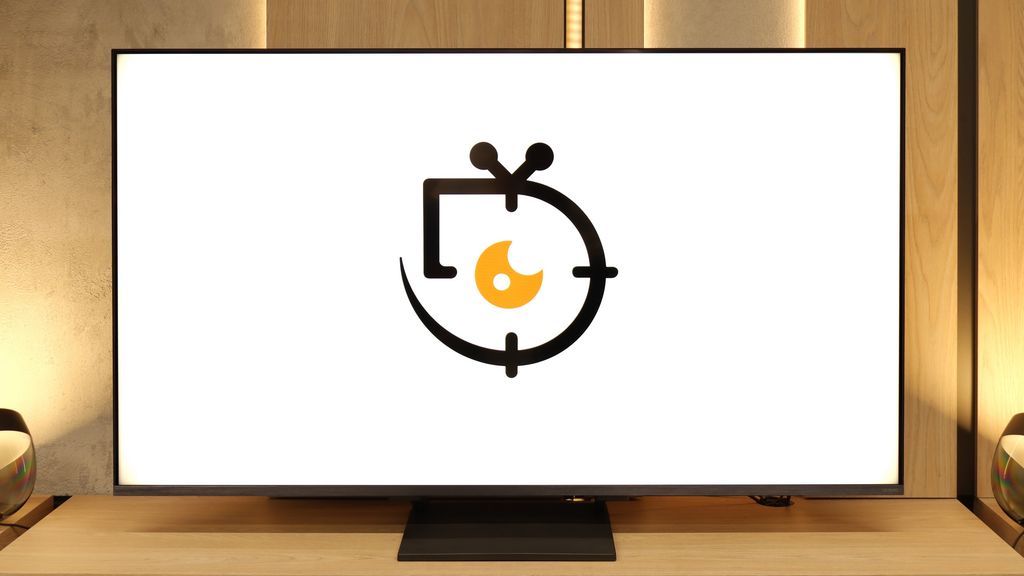
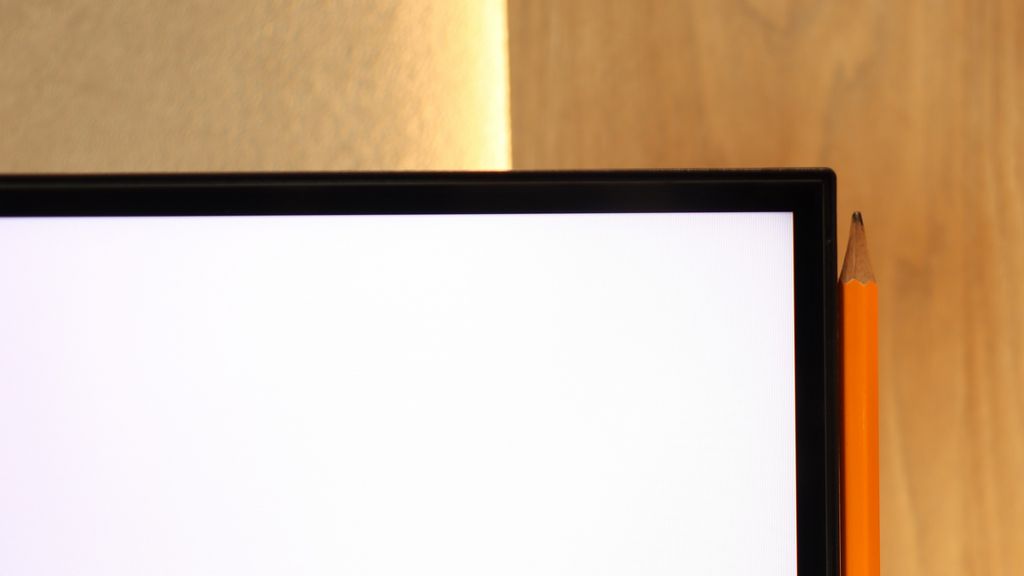
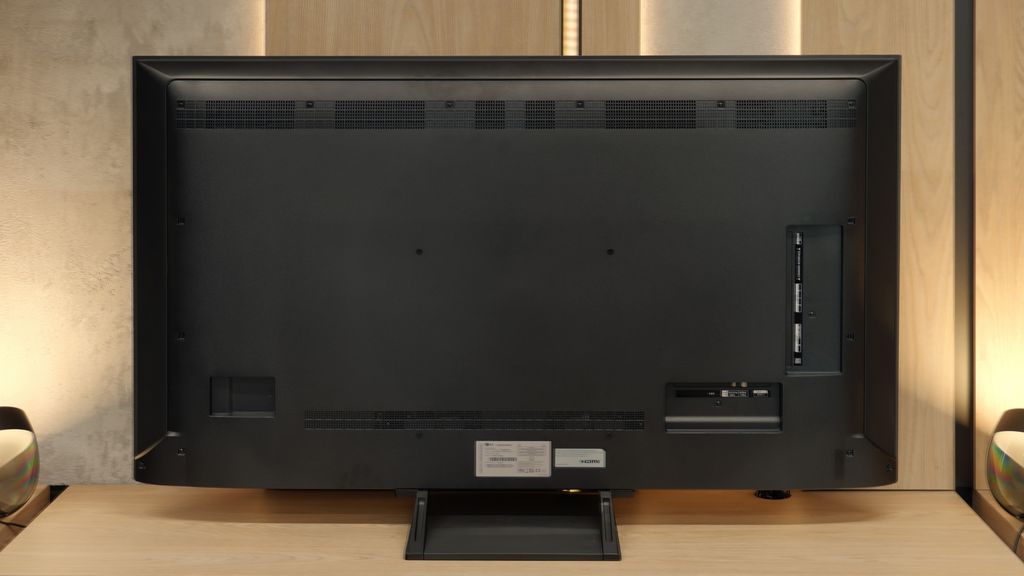
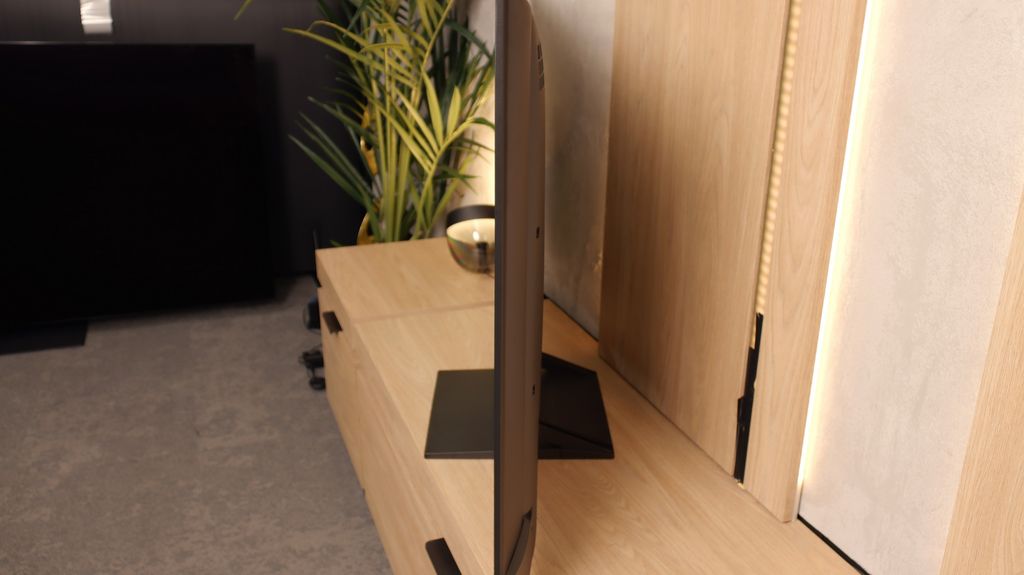
Contrast and black detail
10/10
7.3/10
Local dimming function: Yes, number of zones: 308 (14 x 22)
Contrast:

Result
∞:1

Result
∞:1

Result
∞:1

Result
∞:1

Result
∞:1

Result
130,500:1

Result
30,950:1

Result
15,250:1

Result
6,750:1

Result
4,600:1
Halo effect and black detail visibility:

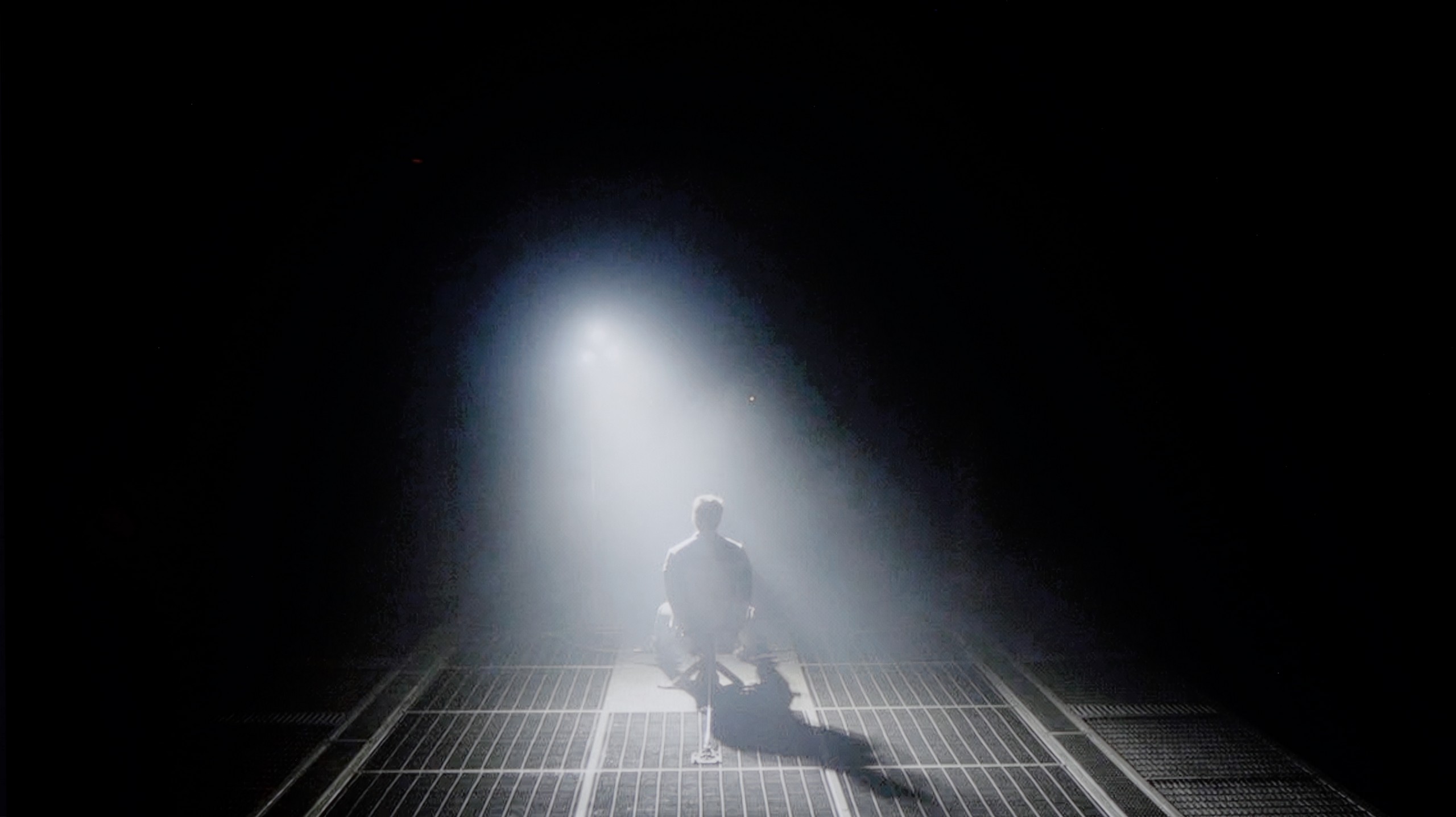
Contrast and black are the domain of OLEDs, and the Philips OLED820 is no exception. The applied WOLED panel from LG Display functions just like in the LG C5 models or the Samsung S90F, providing exactly what we expect – perfect black and infinite contrast. Whether we are watching challenging scenes full of intricate details or simpler shots immersed in uniform black, the television always performs flawlessly. It separates light from darkness with surgical precision, creating an extraordinary sense of depth in the image. And while one can debate various technologies, in this category, OLED simply reigns supreme, and the Philips OLED820 only confirms this rule.
We examined the 55-inch version of the LG QNED93A, equipped with a high-contrast VA panel. However, in the case of Mini-LED televisions, it is not just the panel itself, but primarily the number and operation of local dimming zones that determine the final effect. In this model, we counted as many as 308 zones, which already looks impressive from the start. For comparison, last year's QNED91T in the 65-inch variant had only about 160. The difference is enormous and shows that LG has made a serious step forward in this technology. On paper, it looks great, but practice quickly cools the enthusiasm. The contrast in the QNED93A can indeed be impressive – bright elements are clearly separated from blacks, and in many scenes, the depth of the image truly pleases the eye. The problem is that despite such a significant improvement in the backlighting design, the results are not much better than in last year's model. The algorithms controlling the dimming can be too aggressive. This is especially noticeable in darker sequences, where the screen dims to such an extent that subtle details disappear from view. Many viewers will appreciate the deeper blacks, but it is hard not to notice that this comes at the expense of the director's intentions. The most problematic are scenes with many small, bright elements. It is then that the typical halo effects, meaning glowing outlines, characteristic of LCD with local dimming zones appear around them. This phenomenon does not completely ruin the experience, but it reminds us that even with an increased number of zones, local dimming still has its limitations. Ultimately, the contrast in the QNED93A can be considered good, but we have the impression that the manufacturer did not pay enough attention to optimising the new model in terms of blacks and contrast.
HDR effect quality
7.5/10
5.8/10
Luminance measurements in HDR:

Result
1035 nit

Result
1235 nit

Result
1356 nit

Result
1315 nit

Result
521 nit

Result
1330 nit

Result
219 nit

Result
678 nit

Result
160 nit

Result
1016 nit
Scene from the movie “Pan” (about 2800 nits)


Scene from the movie “Billy Lynn” (about 1100 nits)


Static HDR10


Dynamic: Dolby Vision
Dynamic: Dolby Vision


HDR luminance chart:
LG QNED93A / QNED90A
HDR luminance
Philips OLED820
HDR luminance
Luminance of RGB colors
When it comes to HDR quality, the Philips OLED820 uses the same class of WOLED panel found in its biggest rivals – the LG C5 and Samsung S90F. This means we can expect really solid results. This year, mid-range OLED panels can exceed the threshold of a thousand nits, and the tested model reaches around 1300 nits in some films. This is an outstanding result, allowing the director's vision to be conveyed with immense precision, as this is the brightness range in which contemporary productions are mastered. Of course, there are situations where even the OLED820 has to compromise. Full-screen scenes filled with white, like those in the film The Meg, can drop brightness to 400–500 nits, which clearly weakens the effect. This is a characteristic of OLED technology that has yet to be fully eliminated. Despite this limitation, it is hard not to appreciate the HDR in this model – high luminance and a wide DCI-P3 colour gamut coverage of 99% make the image simply look fantastic.
Although the number of local dimming zones in the LG QNED93A has not directly translated to noticeably better contrast, it is hard to deny one thing about this model – it is brighter than its predecessor. In synthetic tests, we recorded values around 1400-1500 nits, and more importantly, these results are reflected in real film scenes. In full-screen sequences flooded with white or bright lights, the screen could maintain high luminance, which created a truly decent amazing HDR effect. Unfortunately, where the television could showcase true class, that is in scenes requiring precision, all the magic dissipates. The dimming algorithms, which we mentioned earlier, operate so aggressively that small bright objects – such as distant lights, stars, or the moon – can almost completely disappear. A glance at the test scenes from the film Pan or Sicario 2 (screens 2 and 4) shows how subtle details are dimmed to the limits of their visibility. It's a pity, as a greater number of zones could theoretically have led to significantly better results. Fortunately, there are also strengths. The QNED93A performs well in terms of colour gamut coverage, achieving around 96% of the DCI-P3 standard. As a result, colours in films appear vivid and full, and the picture does not lose intensity even in more demanding scenes. Therefore, one could say that the HDR in this model is solid, although the underdeveloped local dimming algorithms hinder its full potential.
Factory color reproduction
6.7/10
6/10


Factory Mode
After calibration
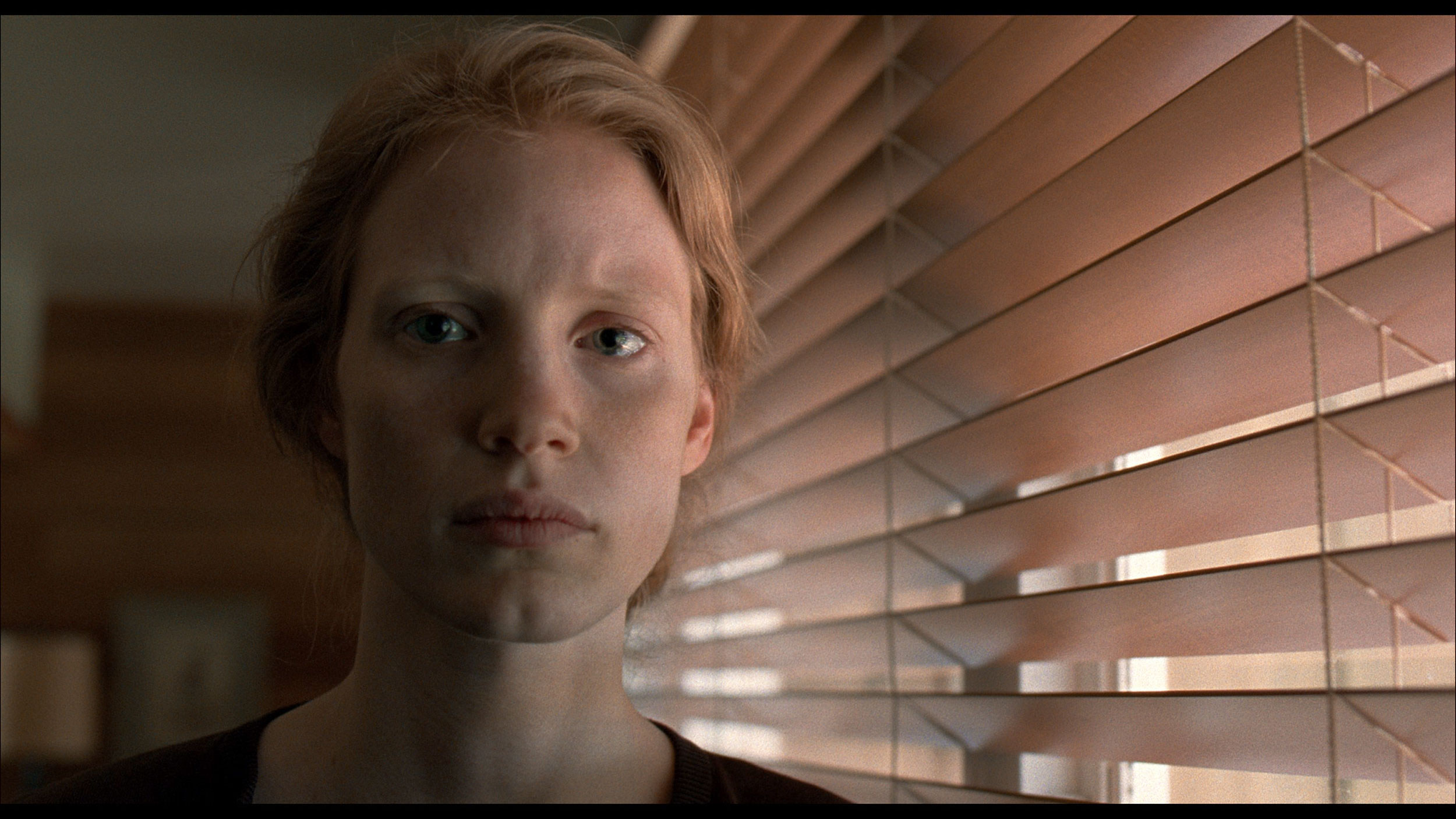
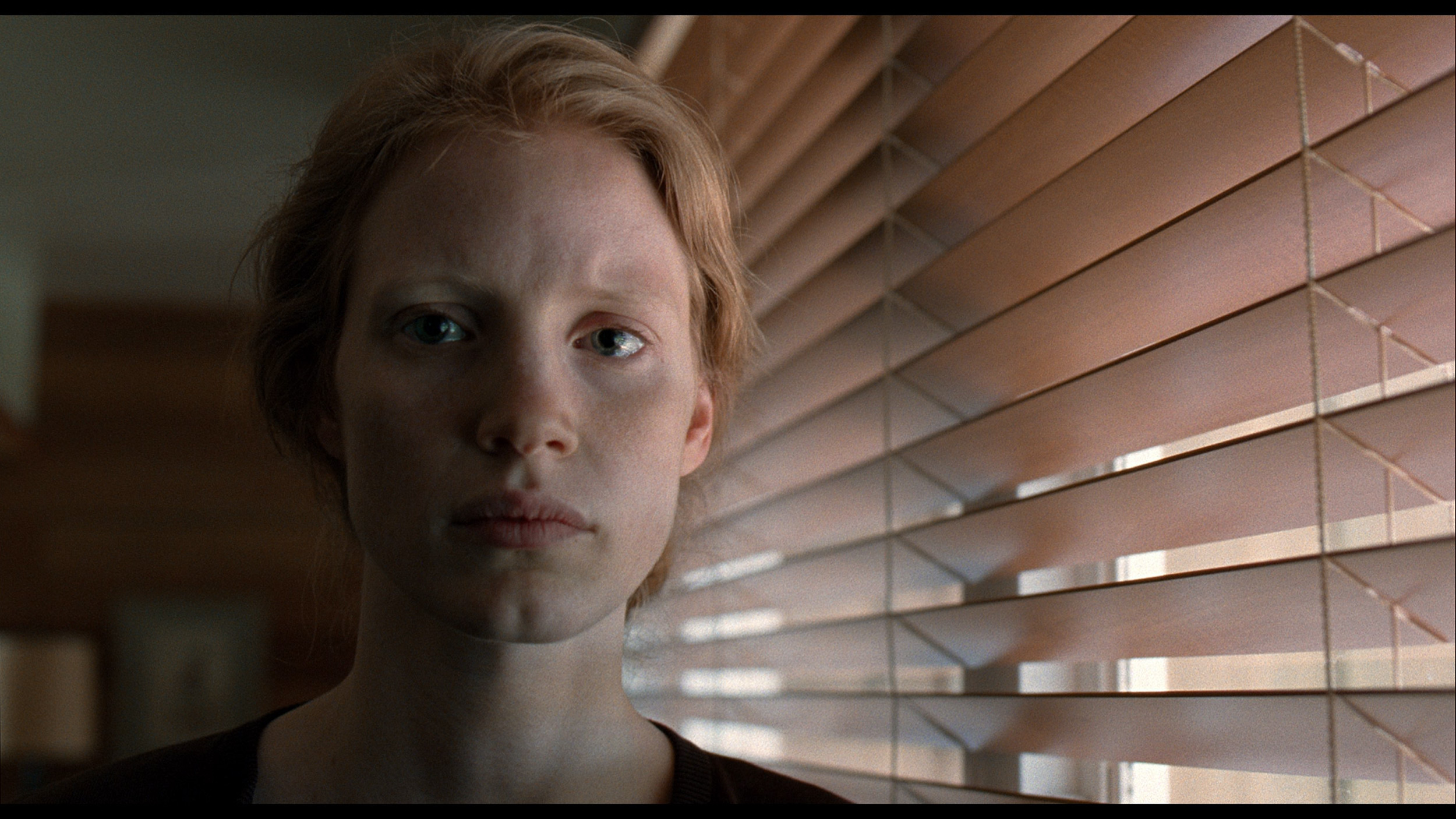
Factory Mode
After calibration
The colour reproduction in the factory settings really surprised us, and positively so. The Philips OLED820, switched to Filmmaker mode, immediately showed that it was quite well tuned in terms of colour. The white balance was relatively accurate, though there was a slight deficiency in the blue hue, which occasionally gave the image a slightly yellowish tint. However, this is not a flaw that particularly detracts from everyday viewing. A bigger issue arose with the brightness characteristics. The gamma curve clearly deviated from the ideal, with the line below the expected values, causing the image to be excessively brightened, and the colours looked as if they were covered with a light milky filter. This effect was also noticeable in tests using the Colour Checker pattern, where more pronounced errors appeared.
In filmmaker mode, the colour reproduction on the QNED93A was relatively accurate, although there were some reservations. In SDR content, the white balance was shifted towards warmer tones, which gave the screen a slight yellowish tint overall. The gamma, in turn, led to a slight brightness increase, making the image appear somewhat less natural, especially in scenes requiring precise shading (this is clearly visible in the comparison photo). This is not a problem that immediately stands out to every viewer, but more discerning individuals may feel that the image deviates from the aesthetics intended by the filmmakers. In HDR materials, the situation was somewhat different. The white balance, in this case, was quite good, ensuring that the whites neither leaned towards pink nor unwanted green hues. However, managing brightness turned out to be an issue. An analysis of the EOTF curve revealed that at certain moments, the television could be noticeably too dark where it shouldn't be, losing some detail and lowering the realism of the scenes. This spoiled the reception of HDR effects, which were theoretically supposed to make the biggest impression. For this reason, we decided to carry out calibration.
Color reproduction after calibration
9.3/10
7.8/10




After calibration, both the Filmmaker mode and the gaming mode gained a lot. A slight adjustment of the white balance and an improvement in brightness characteristics produced excellent results in SDR content – the image looked almost perfect, natural, and very close to reference. In the case of HDR materials, the situation was similar, the colours were presented wonderfully, and it was hard to find anything to criticise. However, we noticed a certain feature, which we already pointed out when comparing scenes from the film Billy Lynn. The analysis of the EOTF curve showed that the television has a slight tendency to dim details in the blacks, so the darkest parts are not always displayed exactly as intended by the director. Nevertheless, the effect after calibration is stunning, and the OLED820 is emerging as one of the more interesting screens in its class. It just needs a little pampering, and there really is nothing to worry about.
After professional calibration, the Filmmaker mode on the QNED93A has improved primarily in areas that matter most on a daily basis. We managed to correct the white balance and eliminate the yellowish tint in SDR content, which is what we watch most often – television, streaming services, or standard quality films. As a result, the colours look natural and pleasant, making the overall experience much more comfortable. We also made adjustments in HDR mode, but here the biggest issue turned out to be the EOTF curve. Although LG offers some flexibility in the settings, the television still manages brightness on its own terms. It is evident that the local dimming algorithms are not fully refined and can ruin the viewing experience by darkening parts of the image at inappropriate times. Nevertheless, it is worth opting for calibration of this model, especially the mode intended for everyday viewing.
Smoothness of tonal transitions
6.5/10
8/10












The fluidity of tonal transitions is unfortunately the Achilles' heel of the Philips OLED820. During testing, we noticed slight issues with colour blending – both in bright and darker scenes, one can perceive distinctive banding that detracts from the naturalness of the image. It must be acknowledged that compared to last year's OLED 819 model, there is a significant improvement, but nevertheless, the competition performs better in this category.
The fluidity of tonal transitions in the LG QNED93A is truly impressive. In most scenes, there are no artificial colour separations or banding effects visible. The dark shots are particularly surprising in a positive way – it is precisely in these that many televisions struggle, yet here the image remains smooth and coherent. In brighter segments, one can note subtle colour blending, however, they are not pronounced enough to significantly distract the viewer. During testing, we encountered a clear issue with DSE, or the so-called "dirty screen" effect. On our unit, the phenomenon was strong enough that in bright scenes, the corners visibly darkened, giving the impression of vignetting. This may be a flaw of the test unit, but during intense viewing, we found it hard to overlook.
Image scaling and smoothness of tonal transitions
7/10
7.8/10
Smooth transition function

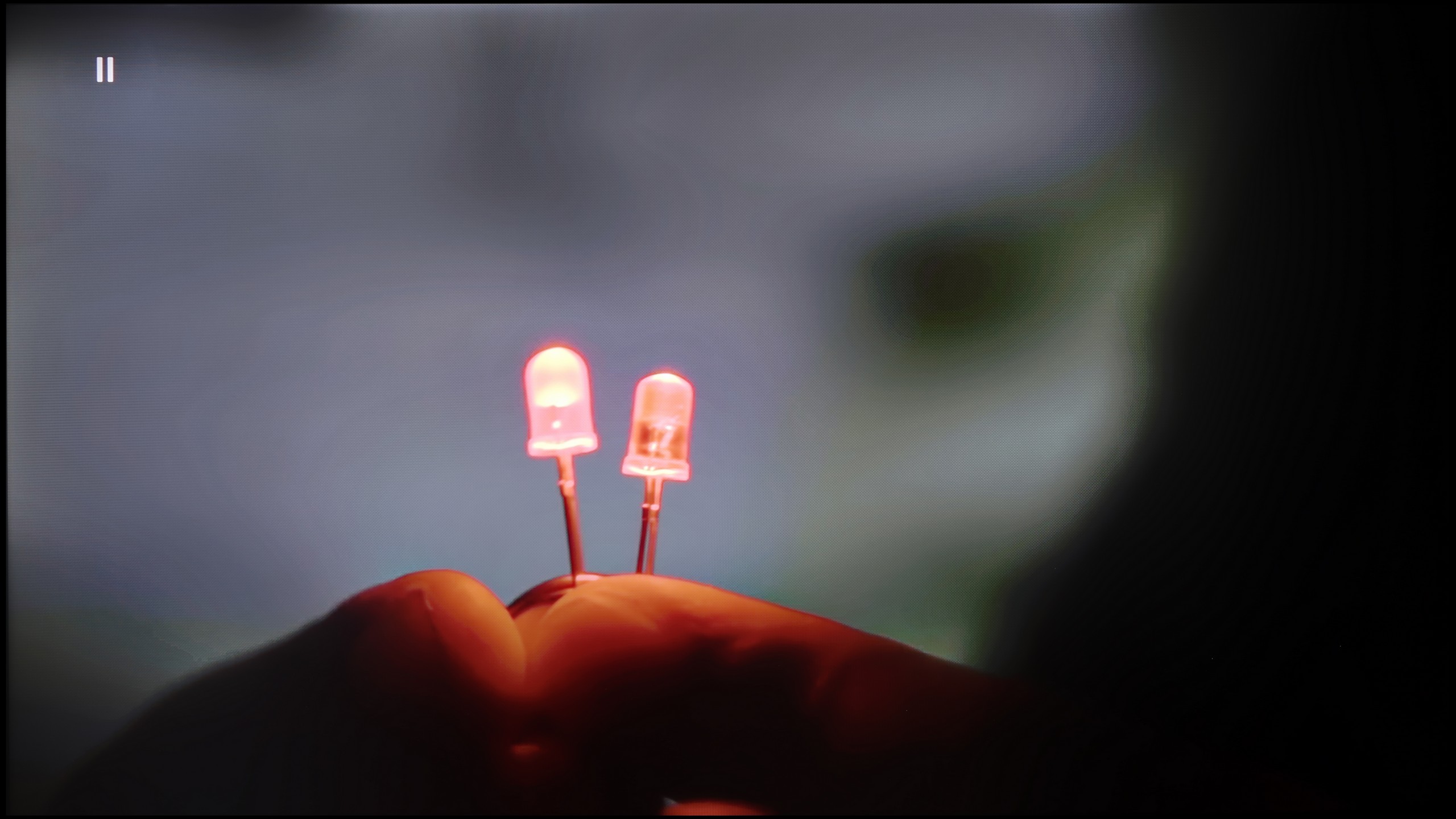
Image without overscan on the SD signal


Fortunately, the earlier effects of the mentioned posterisation can be quite effectively mitigated. The "distortion reduction" function set to a medium level deals with unwanted colour banding, improving the smoothness of tonal transitions. It does happen that it works a bit too aggressively and also smooths out some details – such as minor skin imperfections of the actors – but nevertheless, it can be considered worth using without substantial compromises. The upscaling in the OLED820 also performs quite well. The test image with the model is exceptionally soft, sometimes even too much so, although this can be rectified by slightly boosting the sharpness in the picture menu – this is really a matter of individual preference. The absence of overscan issues with very low-resolution content is also commendable, meaning we don't have to worry that the image will be unnecessarily cropped.
The LG QNED93A proves to be a very solid television for everyday use. Its image processor handles scaling extremely well, which means even older films or terrestrial television benefit from increased sharpness and detail. During the screening of "The Godfather," it is clearly visible how upscaling retrieves additional details from the image – the faces of the characters and the texture of their clothing appear much clearer than in the original material.
The digital image processing also deserves praise. The television is equipped with a function for reducing unwanted colour banding and screen irregularities. It works best in the "Medium" setting – subtly smoothing tonal transitions without excessively interfering with the image. As a result, the natural film grain is preserved, and the screen does not appear artificially smooth. It is possible that in some scenes slight colour banding can still be observed, but in practice, the effect is more beneficial than with a stronger intervention from the algorithm.
Blur and motion smoothness
8.5/10
7.9/10

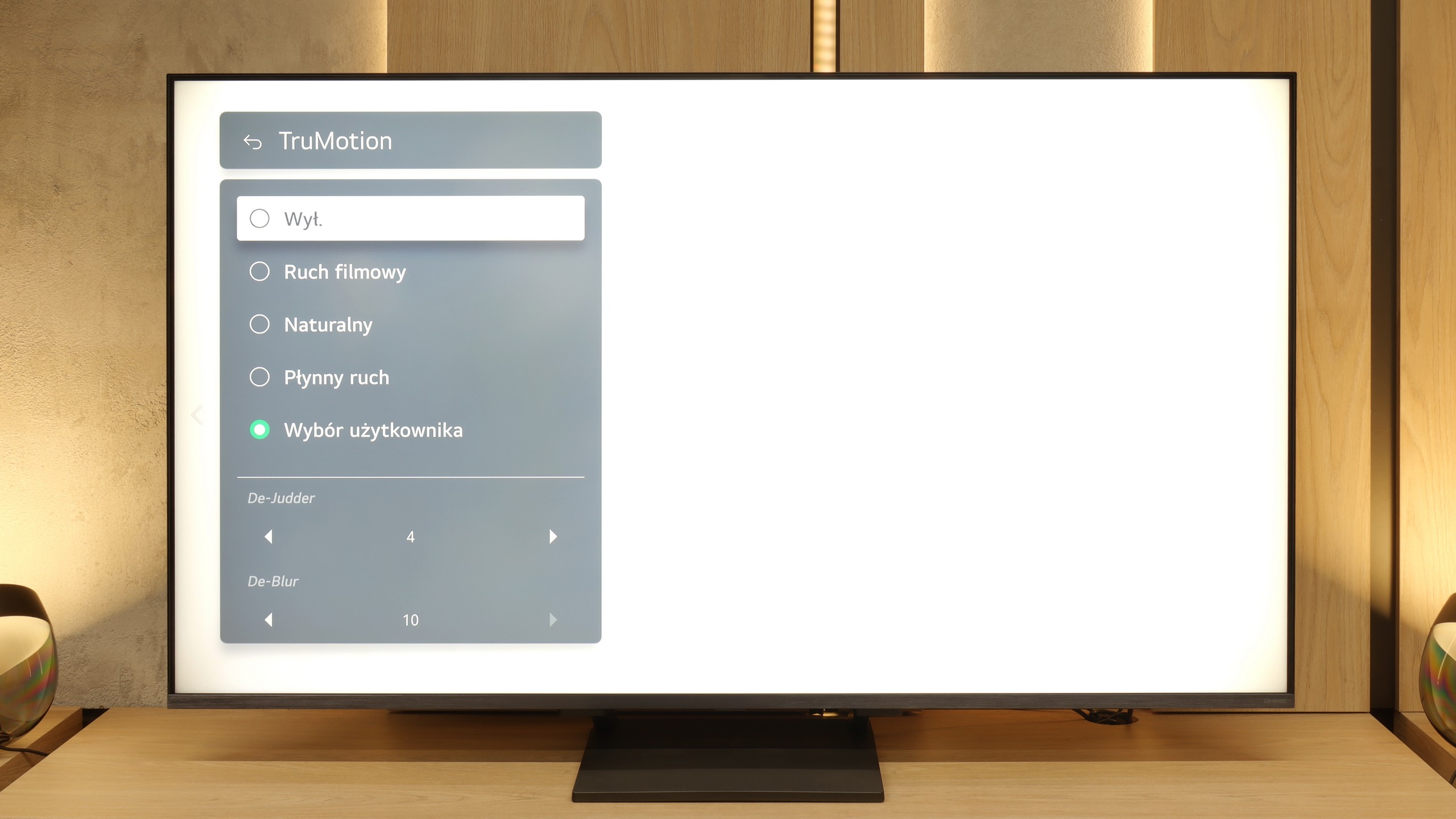
Blur (native resolution, maximum refresh rate):




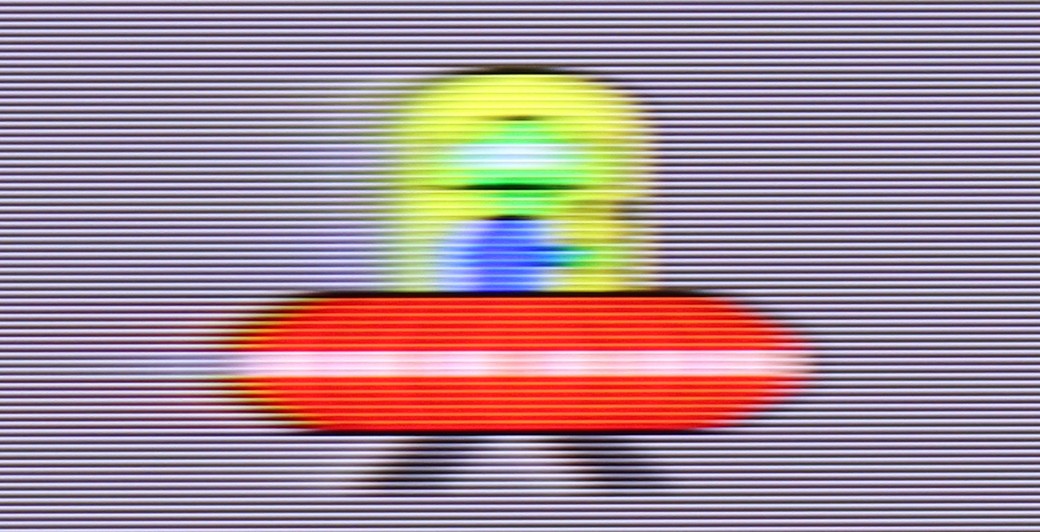
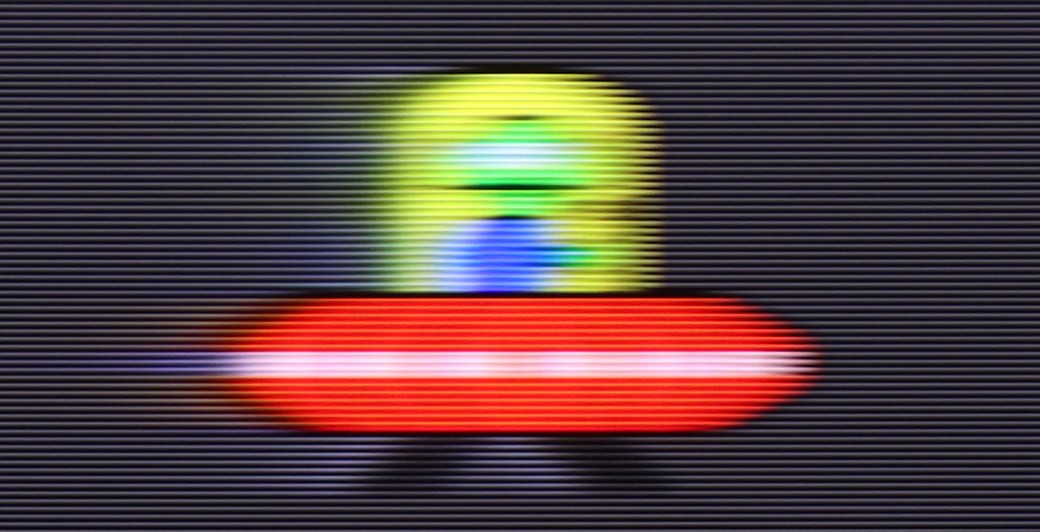
Blur (BFI function enabled):
Image flickers in this mode



Smużenie (4K@144Hz):



Smużenie (4K@144Hz):

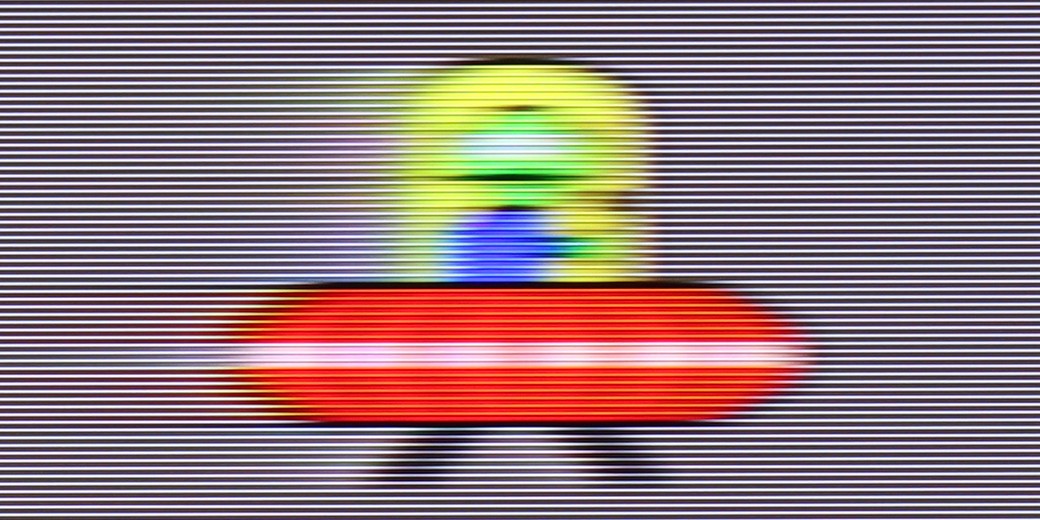
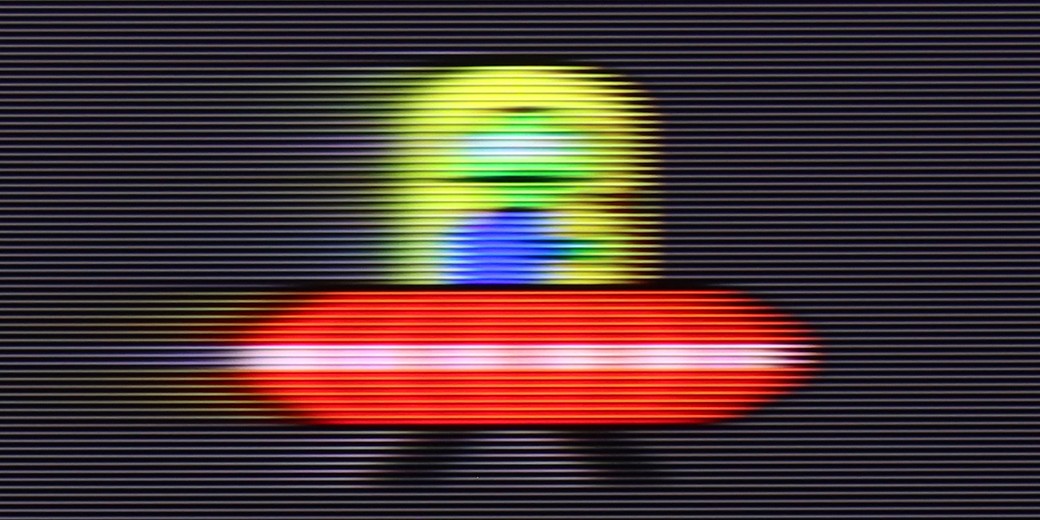
The fluidity of motion is an area where OLEDs always shine, and the Philips OLED820 confirms this rule. The panel itself offers a refresh rate of 144 Hz, which primarily benefits PC gamers, but even with standard television sources or consoles, where it operates at 120 Hz, the motion is fast, sharp and simultaneously smooth, without signs of blurring. This is thanks to the remarkable response time between pixels, which maintains image clarity in every dynamic scene. The manufacturer has also added its own smoother called "Motion Style". In the menu, we find two sliders – the first, responsible for fluidity, allows adjustments to the number of artificially added frames in films. This way, we can choose a raw, cinematic character with a distinctly visible film frame or a more theatrical image with smooth motion. The second slider is for motion blur reduction, particularly useful in sports broadcasts. Here, we definitely recommend setting it to the maximum value, as the effect is truly excellent.
The LG QNED93A is equipped with a 144 Hz panel. This is primarily a nod to gamers, but the fact that higher refresh rates are increasingly making their way into televisions can be viewed positively. In everyday viewing, 120 Hz remains key, and in this respect, the QNED93A performs well. The manufacturer also provides the option to adjust the picture using the TruMotion system – the De-Judder and De-Blur sliders allow you to choose between a cinematic motion character with visible frames and a complete smoothing with theatrical motion.
Console compatibility and gaming features
9.8/10
9.8/10
- ALLM
- VRR
- VRR range48 - 144Hz48 - 144Hz
- Dolby Vision Game Mode
- Correct implementation of HGIG
- 1080p@120Hz
- 1440p@120Hz
- 4K@120Hz
- Game bar

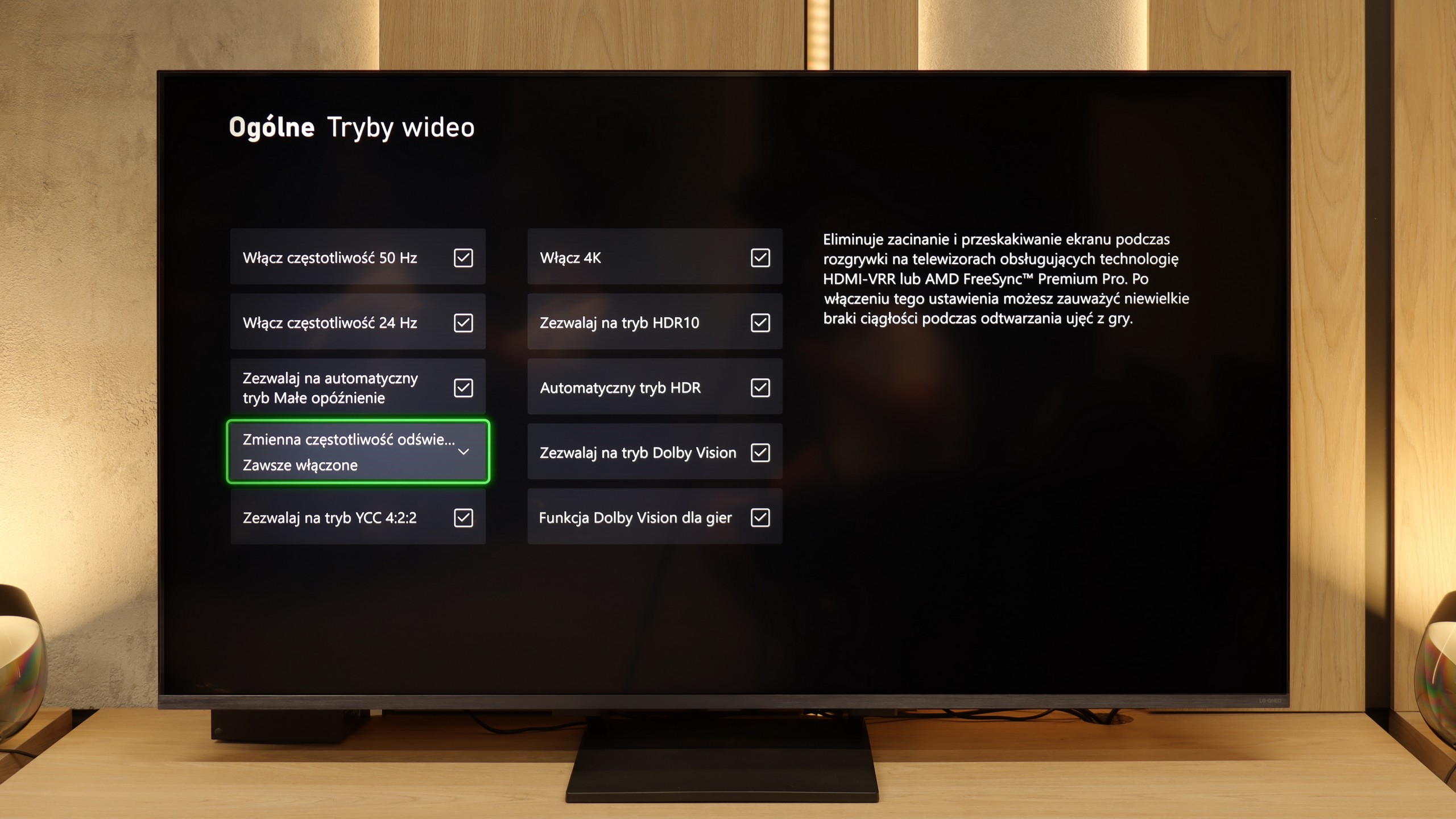

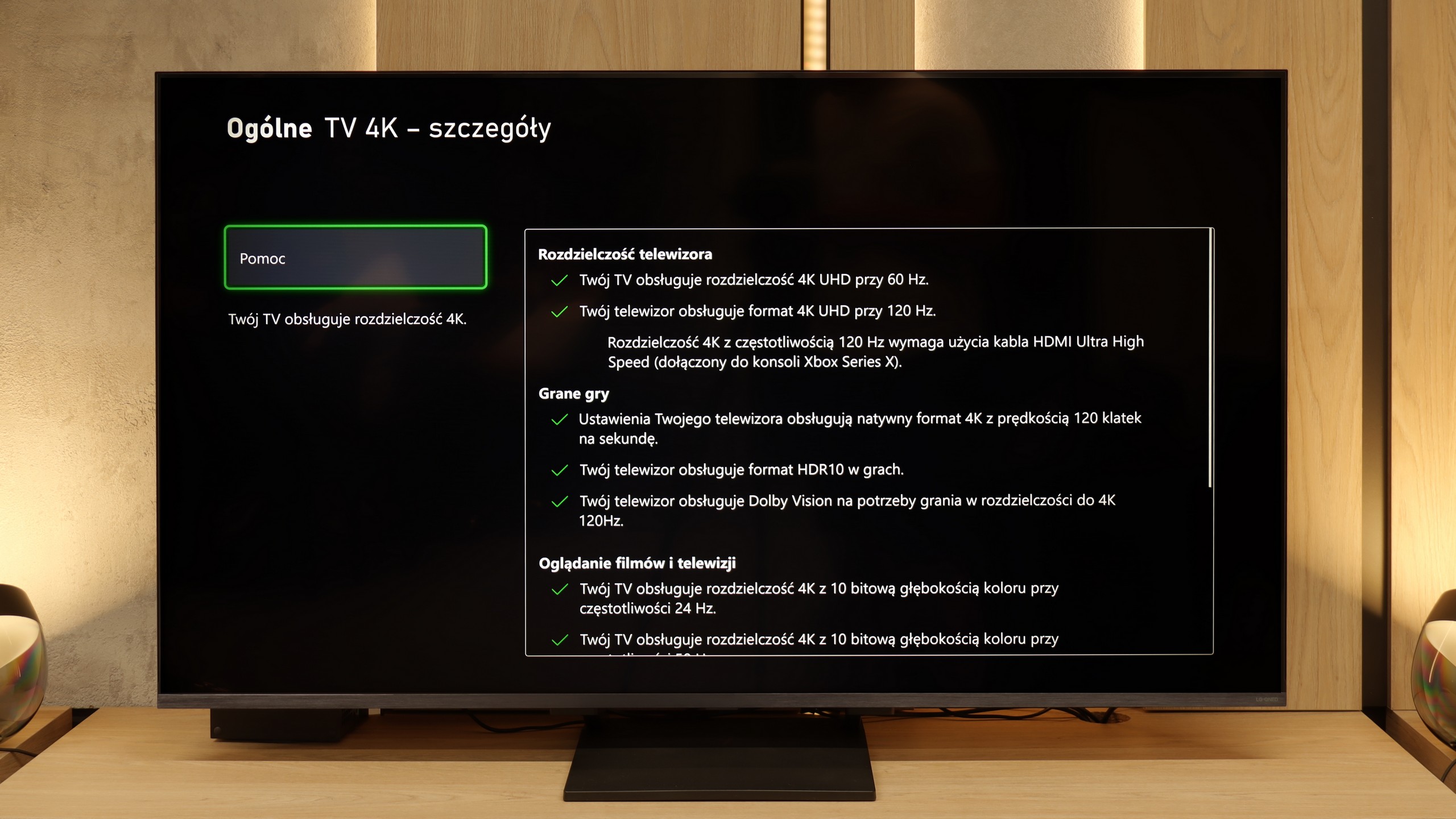

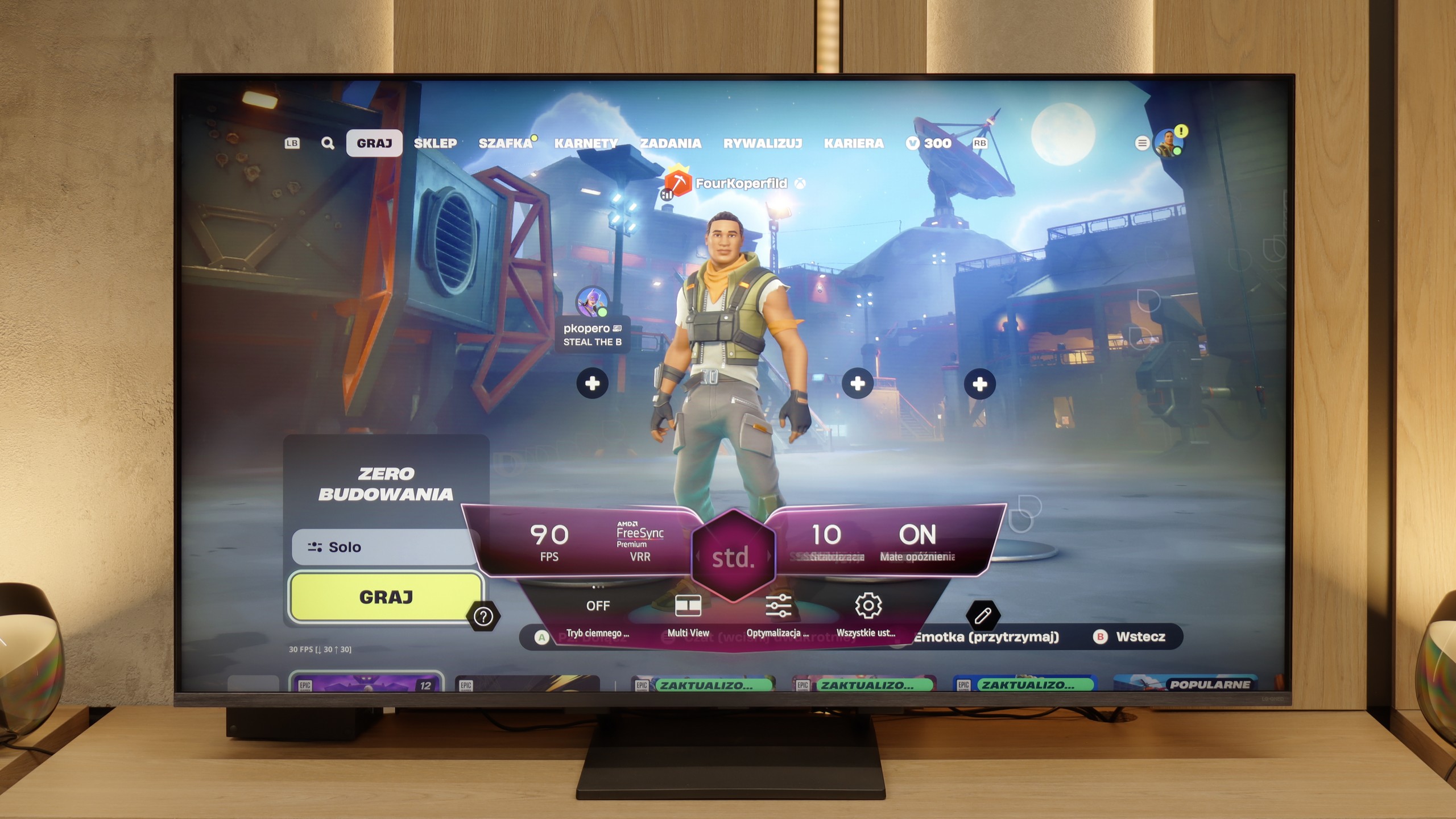

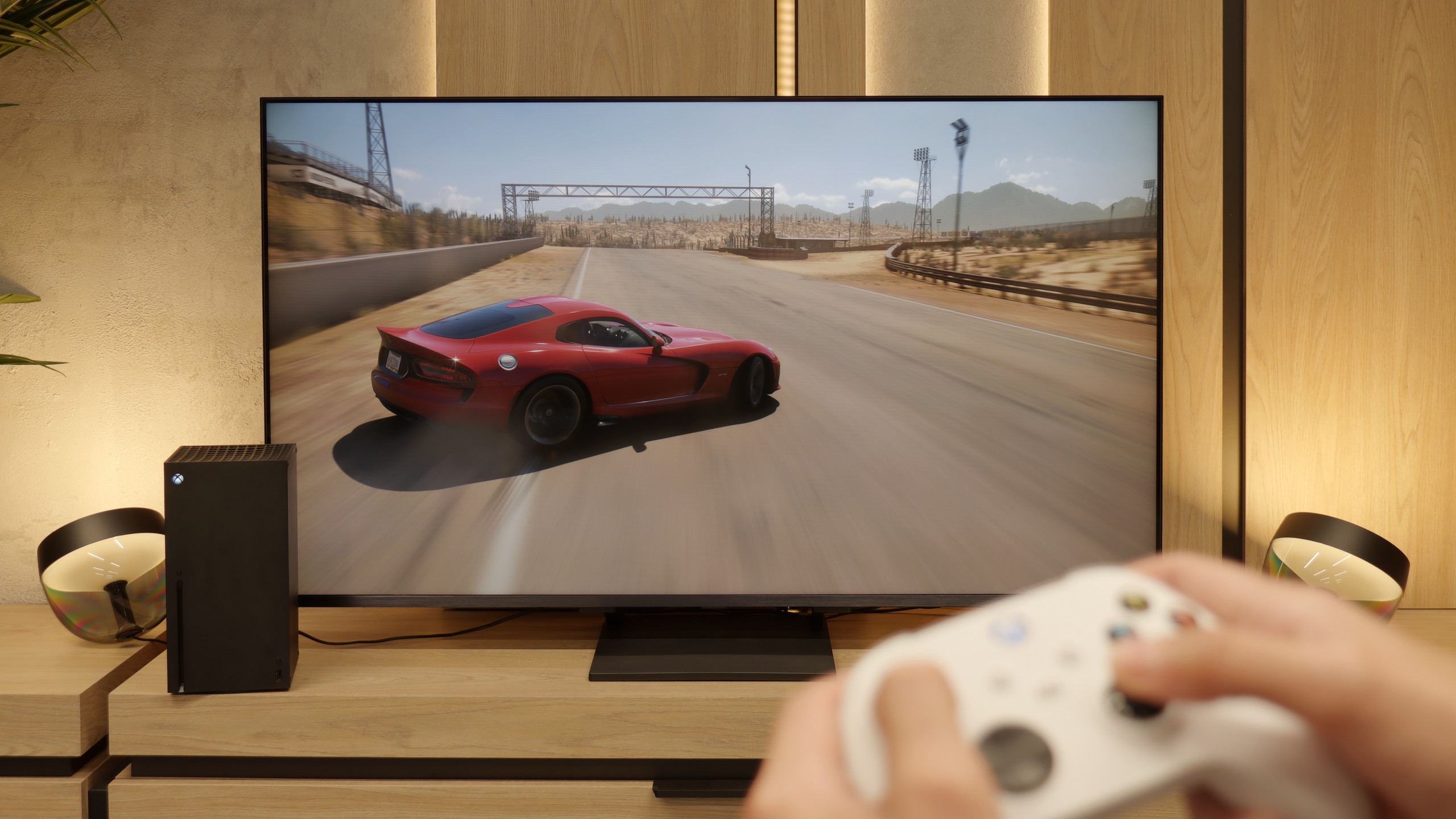
The Philips OLED820 is one of the most complete televisions for gamers. On board, we find practically everything one could expect: two HDMI 2.1 ports with full bandwidth of 48 Gbps (it's a shame there aren't four), variable refresh rate VRR, automatic game mode ALLM, support for Dolby Vision in games, and a good implementation of the HGiG mode. The television handles lower resolutions at 120 Hz with ease, so one can count on considerable flexibility when choosing different picture modes on the console. Philips also includes a Game Bar – a panel that allows changing picture modes, adding a crosshair, or previewing parameters. Although it looks rather clunky and is less polished than that of the competition, it does its job. In practice, therefore, the OLED820, in addition to a full set of four HDMI 2.1 ports, offers nearly everything a gamer could need.
LG QNED93A is a television that has undoubtedly been prepared with gamers in mind. Right from the outset, we get a complete set – all four HDMI ports operate in standard 2.1, so regardless of whether we connect a console, PC or amplifier, we can be assured of full compatibility. This is important, as many manufacturers still limit themselves to two ports, and here nothing hinders the entire equipment from having maximum capabilities. There is also an automatic game mode (ALLM), which automatically switches the television to the appropriate settings when the console is turned on, as well as variable refresh rate (VRR). This ensures the picture doesn't stutter or jerk, even when the frame rate drops – whether in dynamic shooters or during races.
The 144 Hz panel gives an additional advantage in computer games. While 120 Hz is sufficient for consoles, in the case of PCs, the QNED93A allows for even more – every movement, every glance to the side is refreshed faster, and this makes a difference, especially in e-sports. The manufacturer also considered HDR in gaming – the television supports the HGiG mode, which are guidelines to ensure that the lighting effects are exactly as the game developers intended. To top it off, we get Game Bar – a special information bar that appears on the screen, showing parameters in real-time. You can monitor the frame rate, active VRR functions, or the level of input lag. This solution is useful not only for settings enthusiasts but for anyone who wants to quickly check what mode the television is operating in and whether everything is working as it should.
Input lag
10/10
9.8/10
SDR
HDR
Dolby Vision
The input lag on the Philips OLED820 is truly at a reference level. Measurements showed values below 5 ms, placing it among the absolute top televisions available on the market. Even the Dolby Vision mode does not pose any problems in this regard, which is quite a rare phenomenon. In practice, this means lightning-fast response to every movement, no noticeable delays, and complete comfort in dynamic games. In short, superb results that will delight even the most demanding gamers.
The LG QNED93A has nothing to be ashamed of when it comes to latency. The television responds instantly to our actions, as seen in the initial tests with the controller in hand. In 120 Hz mode, the input lag drops to around 7 ms, which means almost immediate response – shots, passes, or precise movements of the joystick are instantly reflected on the screen. For 60 Hz content, the result rises slightly to just under 15 ms, but it still remains within the bounds of full comfort. An interesting feature is the Dolby Vision mode for games, which in the QNED93A works with the Xbox Series X console. Here, the lag increases to about 20 ms. In theory, this could be considered a detriment, but in practice, it is still a very good result. Even with such a demanding picture standard, the gameplay remains dynamic, and the differences in control are practically imperceptible.
Compatibility with PC
6.5/10
8.6/10

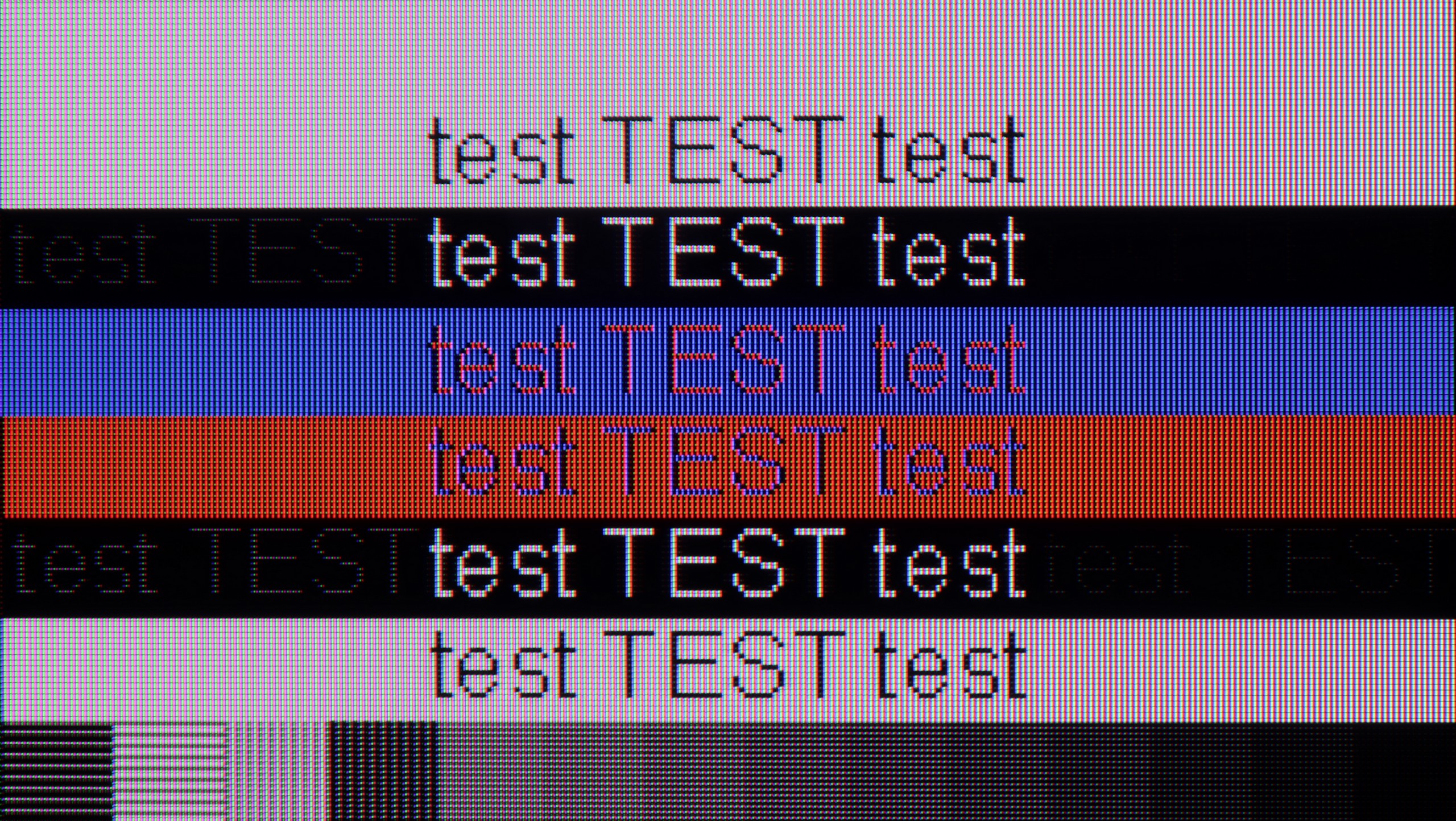
Cooperation with a PC in the case of the Philips OLED820 varies depending on the application. For gaming, it performs exceptionally well: a high refresh rate of 144 Hz combined with G-Sync support provides the smoothness and responsiveness that other televisions can envy. The situation is less favourable when it comes to text work. The lack of proper implementation of chroma 4:4:4 causes fonts on coloured backgrounds to appear slightly blurred, which significantly reduces work comfort. Therefore, it's hard to recommend the OLED820 as a screen for office work with text or numbers. It's a shame the manufacturer hasn't learned from last year's models and this flaw continues to be repeated.
A new feature of this year's model is the full support for 144 Hz refresh rates, which PC gamers will appreciate. The QNED93A works with both Nvidia graphics cards, offering compatibility with G-Sync, as well as with AMD products, where it operates with FreeSync Premium Pro. As a result, gameplay is smooth, without stuttering or tearing, and the panel itself performs very well in dynamic esports titles and demanding AAA productions.
Equally important is the clarity of the image for daily work. The television supports chroma 4:4:4, so fonts in Windows and applications are sharp and clear. However, we noticed a small detail – against a dark background with bright letters, subtle horizontal stripes may appear, resulting from the arrangement of subpixels. This is a minor detail that does not affect the convenience of using the television on a daily basis, but perfectionists might notice it after prolonged exposure to text. But we don’t think anyone would want to work on a 55-inch screen with text sitting less than 1 meter away from it 😉.
Viewing angles
7.6/10
2.9/10
The viewing angles in the Philips OLED820 are another advantage that should please you. OLEDs have always been characterised by almost perfect angles, so regardless of where we look from, the image remains clear and legible. Indeed, the classic WOLED matrix does not compare to technologies like MLA OLED or QD-OLED, but it's still hard to find fault here. The angles are simply excellent.
QNED93A uses a VA panel, which means one thing: the category of viewing angles becomes its Achilles' heel. Already at an angle of about 45 degrees, brightness drops by as much as 80%, and colours begin to noticeably fade. This is the natural price for the high contrast that VA panels offer. There is no additional coating to enhance angles here, as in some more expensive models, which is why the QNED93A performs best when viewed head-on. If you are planning a large family screening where some viewers will sit more to the side, you must take into account that the picture will not be as attractive as it is in the centre of the screen.
TV efficiency during daytime
5.7/10
6.2/10

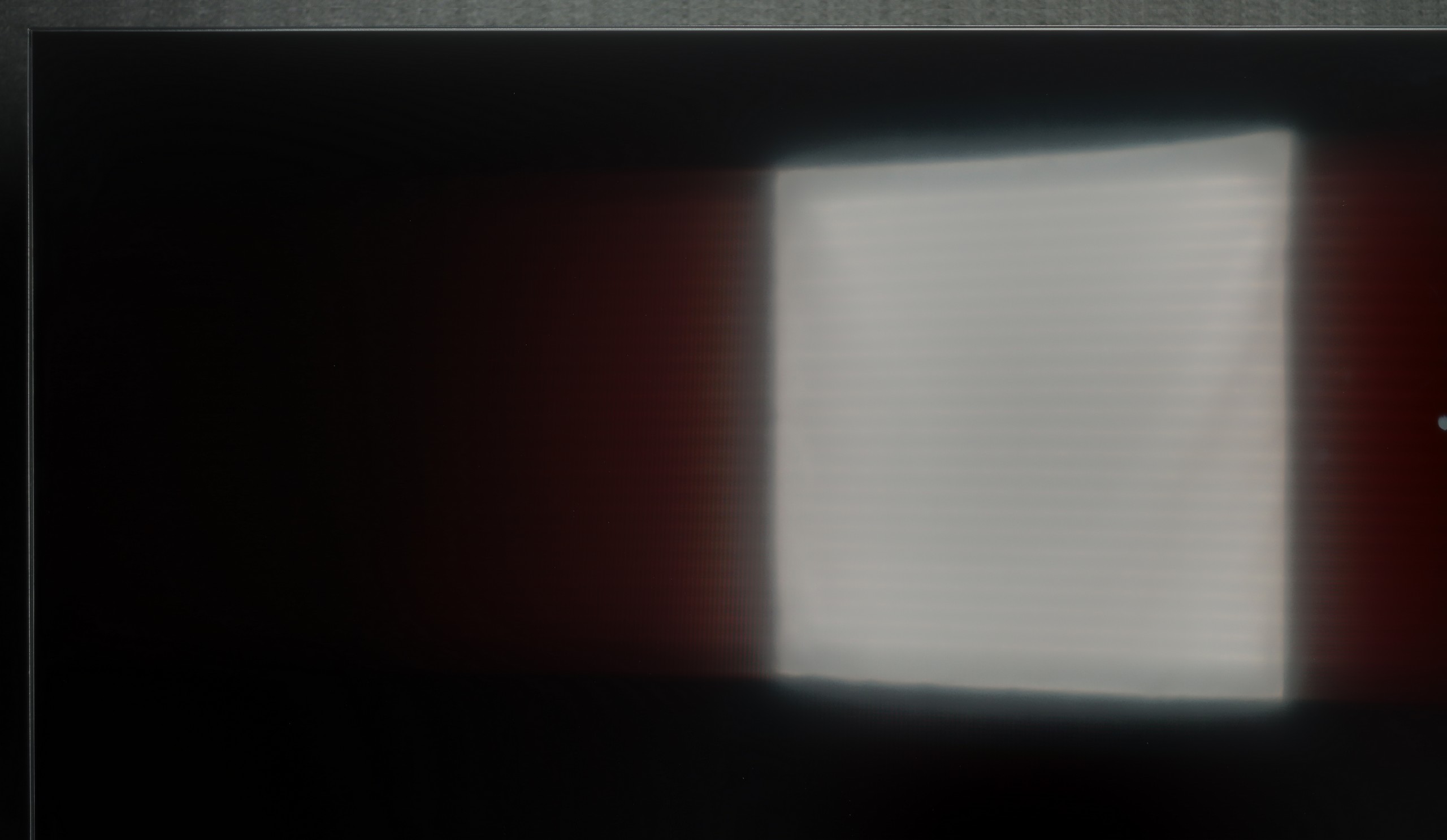

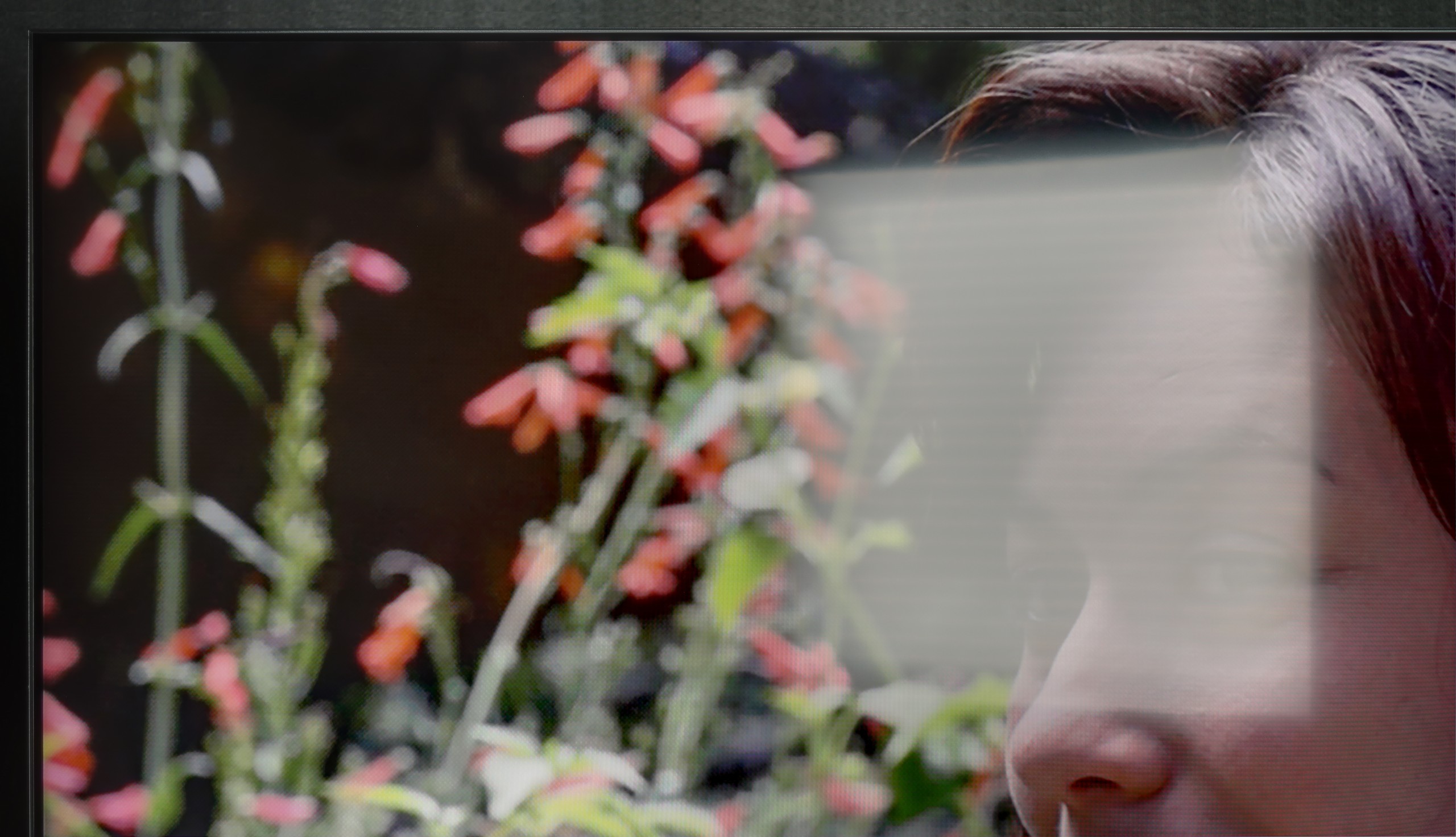
Matrix brightness
Average luminance SDR
LG QNED93A / QNED90A: 546 cd/m2
Philips OLED820: 345 cd/m2
LG QNED93A uses a satin matrix, which handles glare suppression moderately well. It is certainly not on the level of matte screens, but it does not have the mirror-like surface feel of models with a glossy finish. As a result, reflections are not overly distracting, and the colours maintain their intensity even when light from a window strikes the screen. The brightness also scores positively. The average level in HDR mode hovers around 550–600 nits. This means that the television performs well in well-lit rooms, allowing viewers to enjoy a film even during the day, with the blinds only partially drawn. In the role of a large screen in the living room, the QNED93A performs quite well.
Details about the matrix
Subpixel Structure:
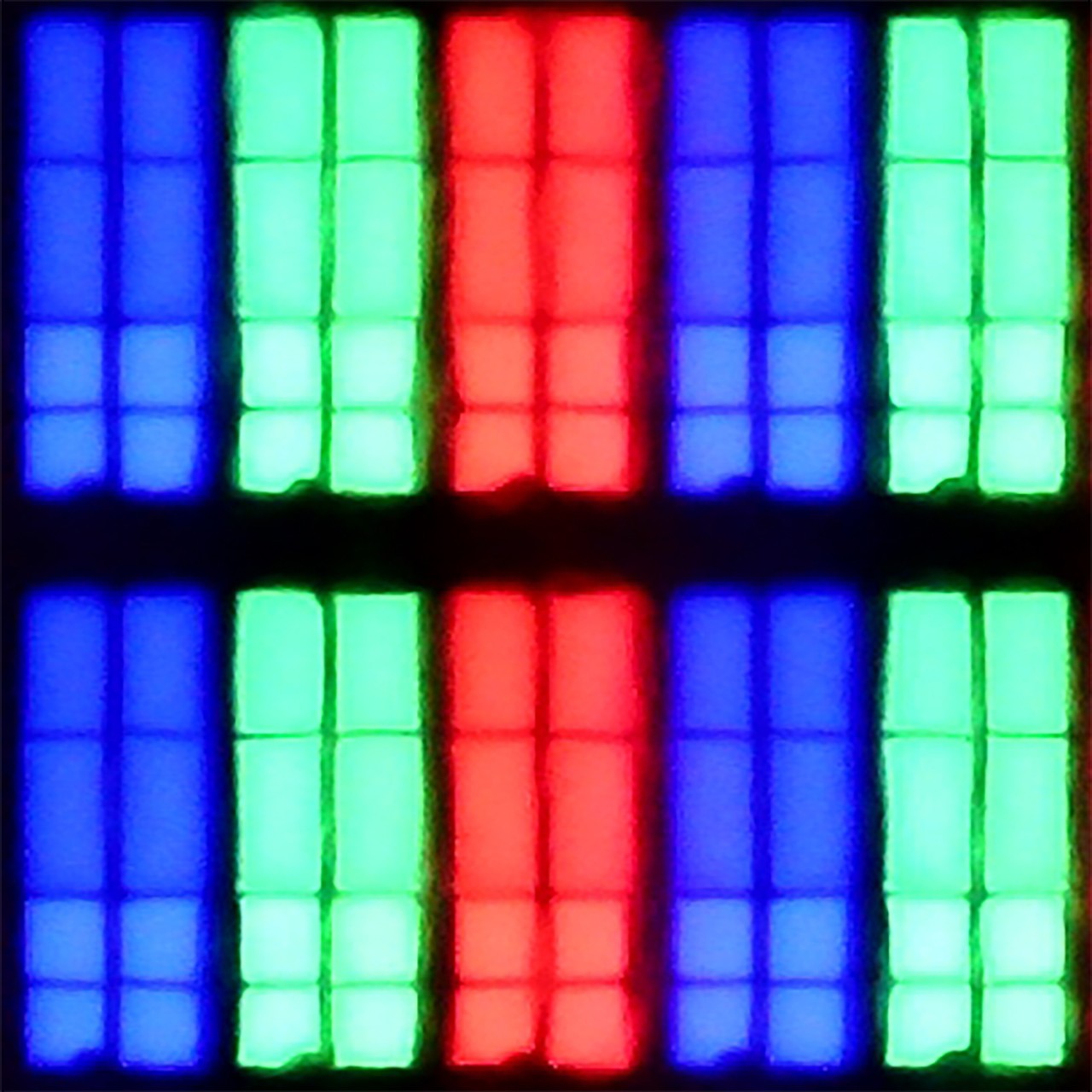
Panel uniformity and thermal imaging:

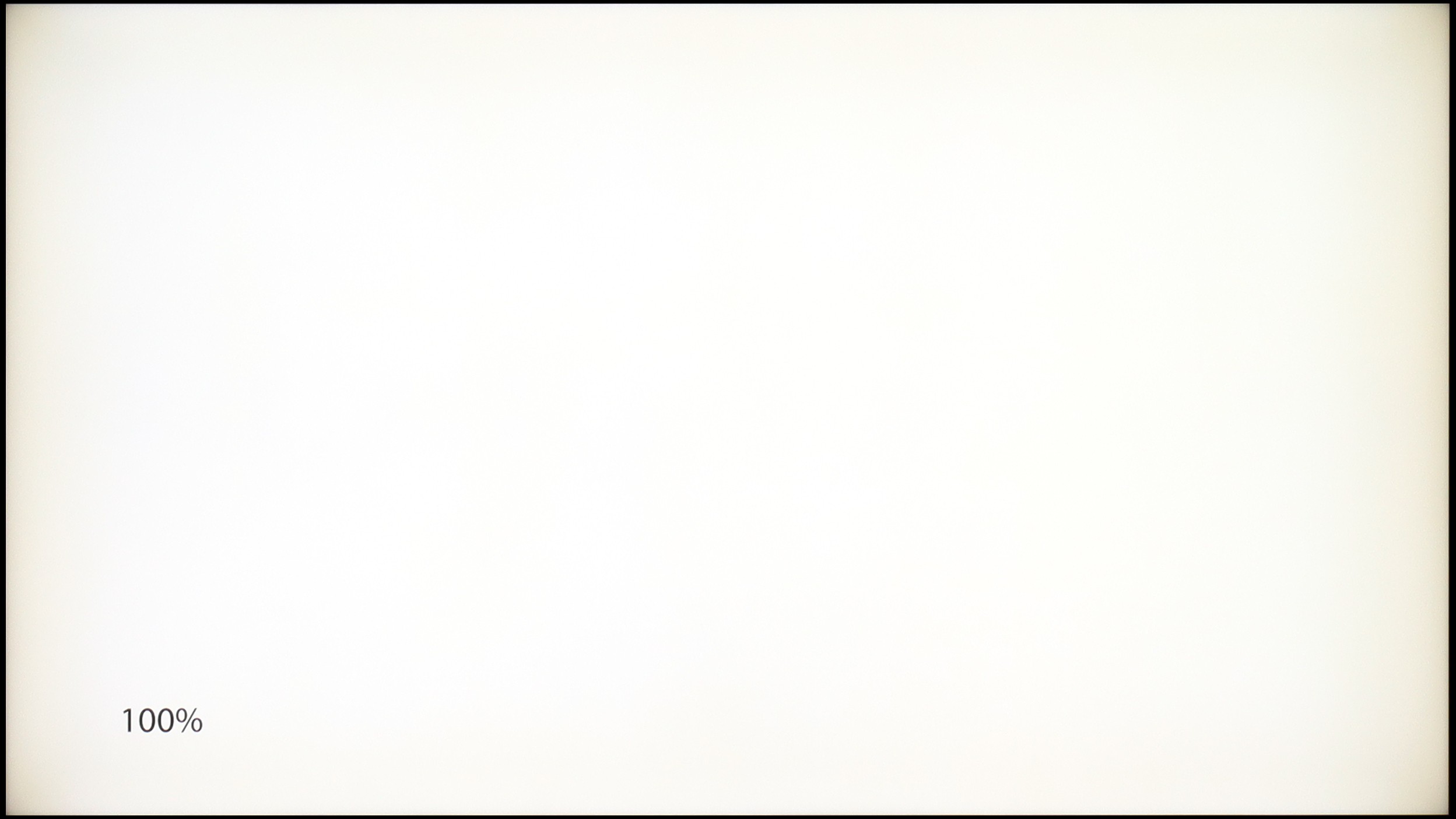
TV features
6.8/10
8.2/10
- HDMI inputs2 x HDMI 2.0, 2 x HDMI 2.1 48Gbps0 x HDMI 2.0, 4 x HDMI 2.1 48Gbps
- OutputsToslink (Optical audio), eARC (HDMI), ARC (HDMI), Mini-Jack (Headphones)Toslink (Optical audio), eARC (HDMI), ARC (HDMI)
- Network InterfacesWi-Fi 2.4GHz, Wi-Fi 5GHz, Ethernet (LAN) 100MbpsWi-Fi 2.4GHz, Wi-Fi 5GHz, Ethernet (LAN) 100Mbps
- TV receptionDVB-T, DVB-T2, DVB-S, DVB-S2, DVB-CDVB-T, DVB-T2, DVB-S, DVB-S2, DVB-C
Classic features:
- Recording to USB (terrestrial TV)
- Recording programming
- Picture in Picture (PiP)
- RF remote control (no need to aim at the screen)
- Backlit remote control
- Teletext
- Audio only mode
- Bluetooth headphones support
- Simultaneous Bluetooth headphones & TV audio
Smart features:
- AirPlay
- Screen mirroring (Windows Miracast)
- Voice search
- Voice search in native language
- Ability to connect a keyboard and mouse





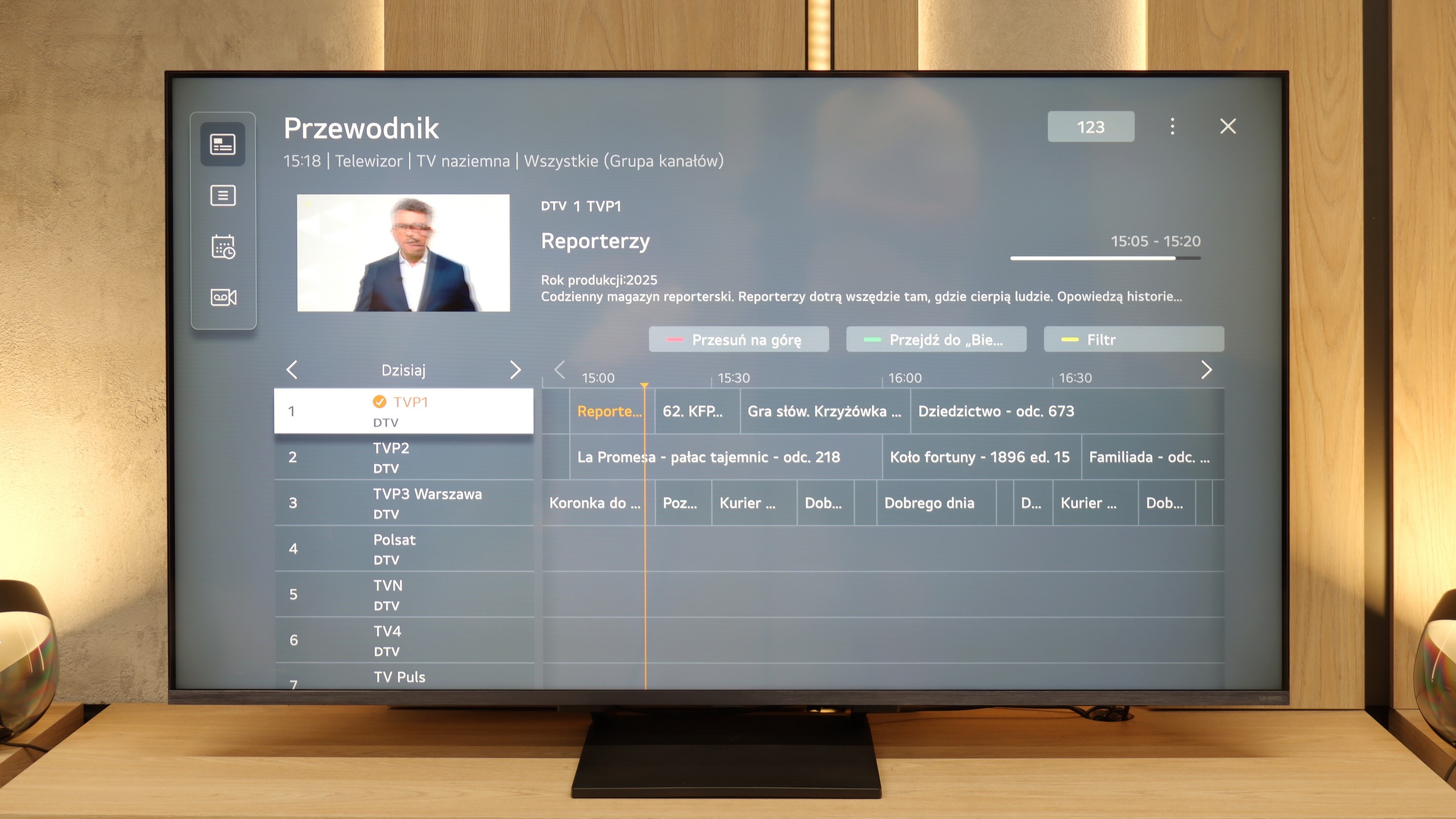
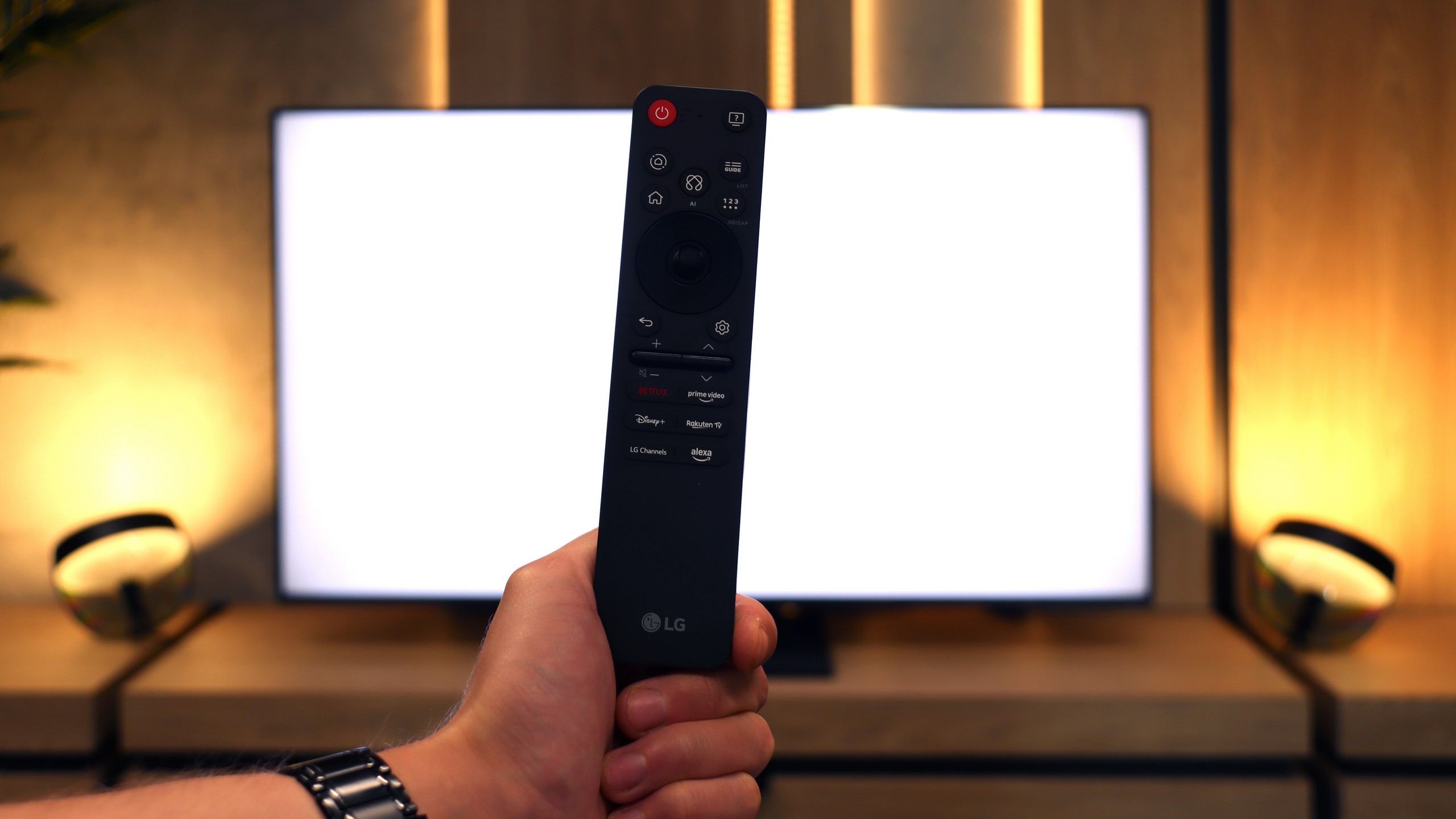
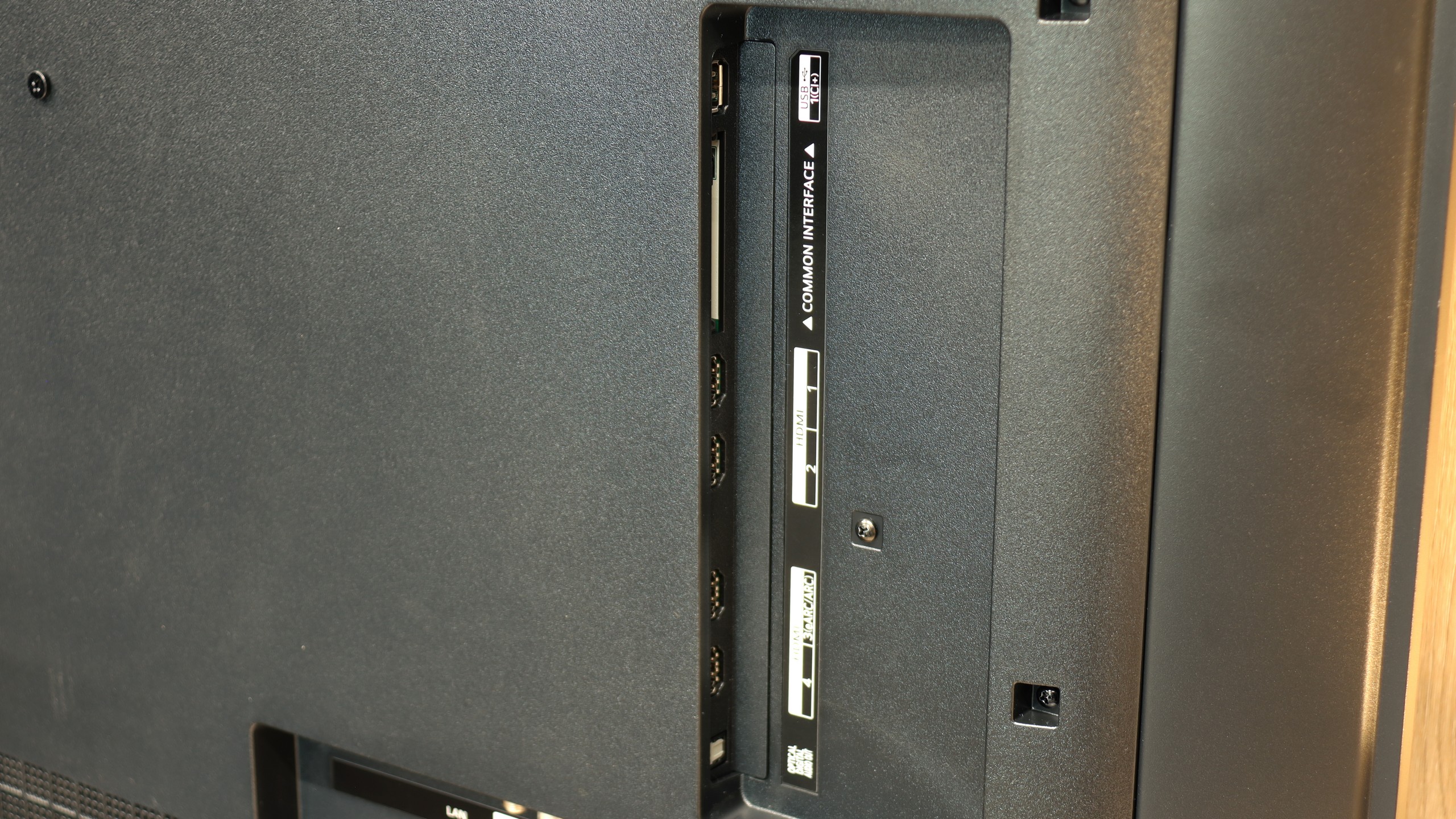
GoogleTV on OLED820
Philips OLED820 runs on the Google TV system, which immediately places it among televisions that truly offer user freedom. It’s a fantastic platform that needs no introduction – it boasts almost an endless number of applications, from popular VOD services to niche programmes or games. Google TV also allows you to personalise the home screen, tailoring content to our preferences, so the television actually “learns” our viewing style. A significant advantage is also the voice assistant from Google – fast, natural, and effective. It can understand even less obvious questions, and in practice, it works much better than many competitors. Unfortunately, there was a hiccup – the screen mirroring feature simply did not work during testing. This can be considered a minor issue, but in 2025, such things simply shouldn’t happen.
Classic Features of OLED820
When it comes to classic additions, the OLED820 does not try to play conservative notes. On one hand, we get a backlit remote control with a numerical keypad that is quite well organised and easy to use. On the other hand – you have to aim it at the screen, as it operates on infrared, which is more reminiscent of equipment from a decade ago than a modern television. It also lacks some features that are often found in competitors – there is no USB recording from tuners or a PIP mode. A nice touch among the classic solutions is the analogue mini-jack headphone input. This is rare today and could prove useful – whether for a senior with an additional headphone station or for someone who would like to connect older speakers.
AmbilightTV OLED820
One cannot overlook Ambilight, which is a hallmark of Philips. This solution impacts not only the appearance of the television but also the reception of content. The illumination system can be set up in various ways, from a multi-coloured mode that dynamically tracks the image to calmer, static backlighting. We definitely recommend the latter option, as the gentle light behind the screen makes the content being watched, combined with the OLED matrix, look even deeper and more engaging. It’s a simple yet very effective addition that has given Philips televisions character for years.
Smart Features
The QNED93A runs on webOS, which is one of the most enjoyable Smart TV systems. It comes with AirPlay, Screen Mirroring, Chromecast, and convenient voice control. The platform is quite clear and mostly fast, although in the tested unit, there were instances where the response to pressing the remote control required a moment of "thought". However, it's hard to consider this a serious issue – webOS still remains a refined system and will likely receive further updates that will enhance it even more.
Classic Features
In this model, LG has not included the old Magic remote with a numeric keypad, but the television itself performs excellently as a screen for everyday viewing of channels from the antenna. The EPG interface is readable, the television offers a TV guide, and we have the ability to record programmes from the built-in tuners directly onto a USB stick. Everything works correctly and intuitively. We only missed the PiP feature, which in 2025 is offered by just two manufacturers.
Magic Remote
The Magic remote is still the biggest difference compared to competitors. In 2025, it underwent a slight facelift – it has fewer buttons and resembles the minimalist remotes from Samsung. However, the cursor remains key, functioning like a magic wand. Just move your hand, and the pointer on the screen follows your movement. It's incredibly simple, yet very convenient. Navigation in the menu or entering passwords is much faster, and it's difficult to then switch back to traditional buttons.
Playing files from USB
9.5/10
8.8/10
Supported photo formats:
Maximum photo resolution:

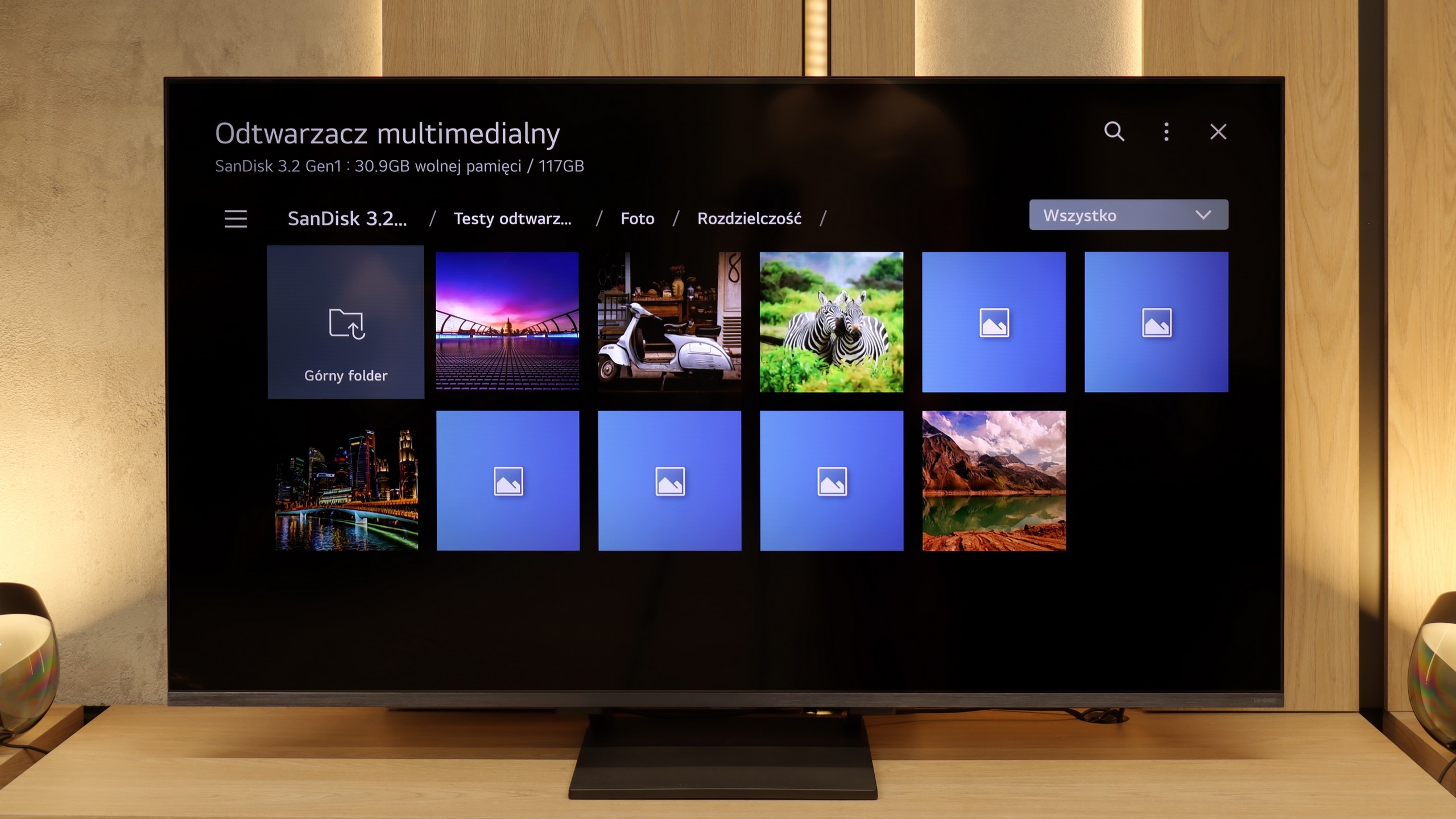
The Philips OLED820 has a built-in file player with USB, which at first glance looks quite clunky, but in practice works surprisingly well. One could even say that it is one of the best built-in players available in televisions. It handles practically every type of file: photos, videos or music, with a few minor exceptions that most of the competition does not support either. And if someone still feels like something is missing, there is always the option of installing the VLC application from the Google Play library, and the problem disappears.
The built-in media player in the LG QNED93A handles most popular video and audio formats without any issues, so it is quite sufficient for basic use. However, during testing, we noticed two minor oversights. The first is the lack of support for HEIC files, which is Apple's photo format. The manufacturer claims that the television should be able to open them, but in practice, we were unable to confirm this. The second issue concerned text files with subtitles in TXT format. Fortunately, the other more common subtitle formats worked without any problems, so it's hard to consider this a real limitation in everyday use.
Apps
9.6/10
9.1/10














































Sound
7.7/10
6.9/10
- Maximum volume81dB81dB
- Dolby Digital Plus 7.1
- Dolby True HD 7.1
- Dolby Atmos in Dolby Digital Plus (JOC)
- Dolby Atmos in Dolby True HD
- DTS:X in DTS-HD MA
- DTS-HD Master Audio
The Philips OLED 820 features a built-in 4.1 speaker system with a total power of 70 W. At the back of the casing is a subwoofer, which is responsible for quite solid and deep bass. The classic speakers responsible for the rest of the range are located at the bottom of the television, which means that the sound does not always spread in the way we would want. However, the overall sound can be considered acceptable – series, television programmes, or occasional music listening are satisfactory, with a slight bass support. This should be sufficient for daily use, although we still recommend purchasing even an inexpensive soundbar, which will significantly improve the user experience.
The LG QNED93A sounds quite pleasant for built-in speakers in a television. The sound quality is fairly clear, and at medium volume levels, vocals and dialogues come across clearly. The bass, as is often the case in relatively slim designs, is not the strongest, but its presence can be heard and is entirely sufficient for everyday viewing of series. The maximum volume reaches around 81 dB and does not lead to strong distortions, although during more demanding cinematic scenes, it's evident that the system has its limitations. Overall, the sound can be described as decent and not off-putting. It certainly won't compete with a soundbar, but it won't ruin your film experience either.
Acoustic Measurements
81dBC (Max)
75dBC
81dBC (Max)
75dBC


